Modern art Pop Art [53] modern art pop abstract artist & Contemporary Conceptual Abstract Artist Louis Choi Chul-joo's Desire Concept Abstract Art Work Review / Choi Chul-joo's definition of pop art is a conceptual abstract modern realist pop art that com
Modern art Pop Art [53] modern art pop abstract artist & Contemporary Conceptual Abstract Artist Louis Choi Chul-joo's Desire Concept Abstract Art Work Review / Choi Chul-joo's definition of pop art is a conceptual abstract modern realist pop art that combines unique aesthetic linguistic meanings and visual structures based on reality-based images reflecting real events and social contexts by borrowing images from mass media such as news and cartoons./ Concept Abstract Modern Art Criticism and Case of Contemporary Concept Abstract Art: Modern art painter Louis Choi Chuljoo's Contemporary Art Today contemporary artworks contemporary artist Choi Chul-joo's Art Works ( https://opensea.io/Louisland ) Criticism: Design Process of Contemporary Artist and Contemporary Concept Abstract Painter Concept Abstract Art Work Critique: As Contemporary Concept Abstract Art, the artistry of aesthetic value was examined through visual art theory, and Choi Chul-joo, a Contemporary Concept Abstract Painter and Critic, was his Through "morning glory" works, perceptions and aesthetic structures are often interpreted by reflecting abstract conceptions of desire and linguistic semantic structure, resulting in abstraction of the same real image as the linguistic meaning of abstract desire.
Abstract artist Criticism: Louis Chul-joo Choi, morning glory 2025-1-Pond Rendering Reflects Current Desire
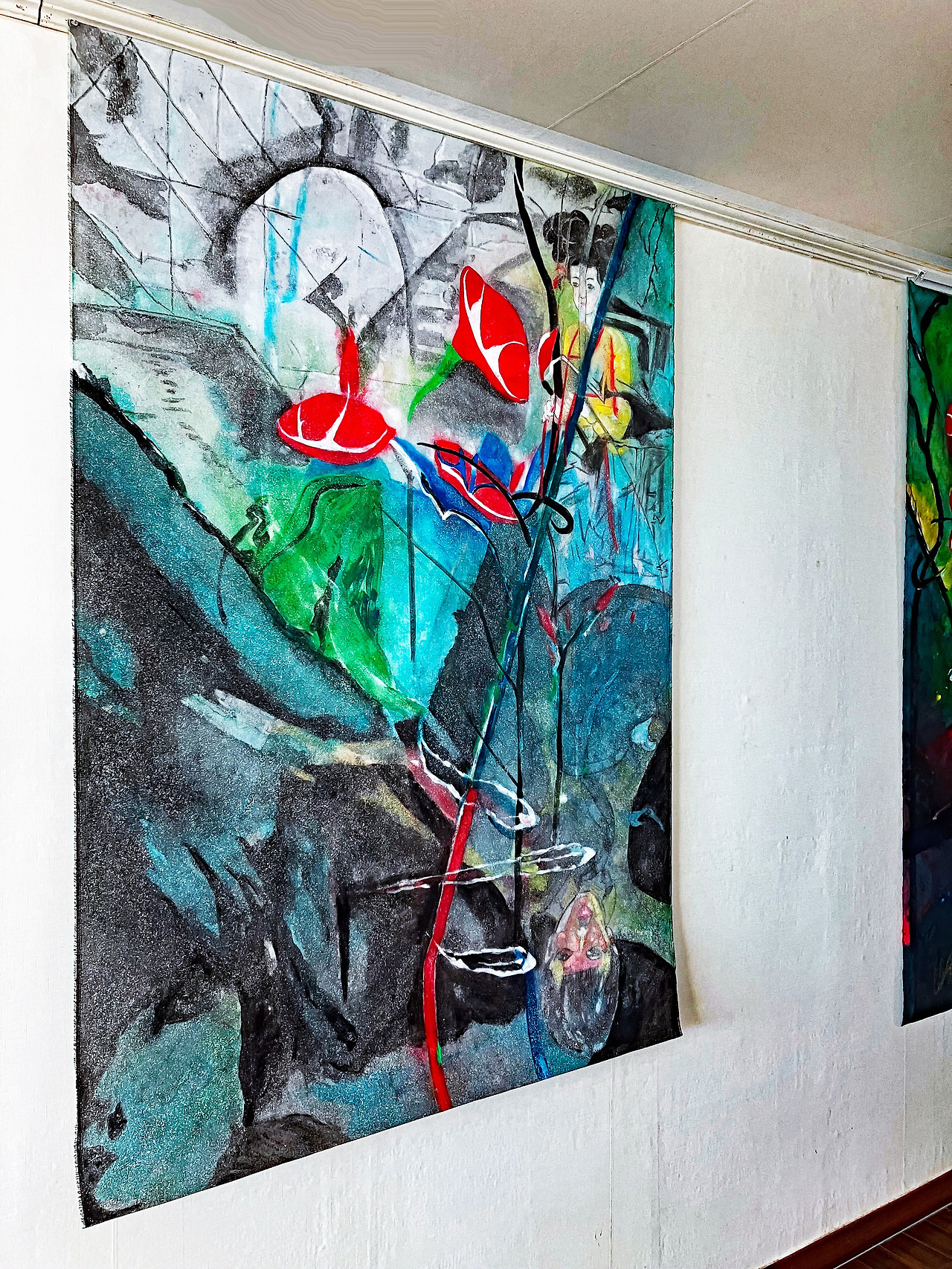
Pond Rendering Reflects Current Desire
As an aesthetic structure of desire, the subject is a pop art image that models unconscious desire as an existential reality by dividing the concept of desire, which is the same as the event image, into unconscious and real images.
Therefore, the subject who speaks linguistic meaning actually represents abstraction, the truth value of the concept of desire, which is an expressive aesthetic structure that specifies the viewing effect of colloquial language and event video broadcasting as an act of speech enunciation that depends on the news.
This is because the concept of desire in visual images is an open system, and numerous visual images are transmitted to others through a pluralistic visual system. Abstract images, which are the true values of the concept of desire, attract attention because they have universality as real images expressed by the desires of others. In other words, the object exposed to the abstract desires of others functions as a desire to exchange the same aesthetic image as the concept of desire of others through the diachronic function of pop art applied as a work of art.
Like Kant, the mythical object of the same structure as humans and the logical facts within one structure are included in one structure as contradictory antinomic relationships that are compatible on equal grounds.
The interpretation of the concept of desire in a linguistic sense in which the abstract image and reality of the concept of desire are the same represents the structure of desire by forming a semantic relationship with antinomic desire as a real image in which the reality of the abstract concept of desire is the causal structure of desire.
Therefore, the object as an event image, which is the same rational object as the linguistic meaning of the desire structure through the gaze of the rational subject, is recognized as a real image that the subject cannot see.
Additionally, other objects of desire are continuously represented by real images that attempt to fill the deficiency of desire. The pond, which reflects present desire as an object to abstract desire, presents a desire structure as a reality, which is an object to abstract desire, but it returns the cause of desire as a real image to an object as an event image, free from the imperfect abstraction that lacks desire that is subjugated to social visibility that has been concealed and deviated from lack through real images. In other words, the structure of deficiency and divided desire is hidden through real images of abstract desires, and contradictory desires subordinate to deviated social visibility become the cause of desire and become the objects of real images.

Object rendering process of the concept of desire
Object rendering of the concept of desire is 1. a pop art image that renders unconscious desire as an existential reality by dividing the same concept of desire as the event image into unconscious and real images as an object. Therefore, the subject who speaks linguistic meaning actually represents abstraction, the truth value of the concept of desire, which is an expressive aesthetic structure that specifies the viewing effect of colloquial language and event video broadcasting as an act of speech enunciation that depends on the news. 2. As the truth value of the concept of desire in visual images is an open system, and numerous visual images are transmitted to others through a pluralistic visual system. Abstract images, which are the true values of the concept of desire, attract attention because they have universality as real images expressed by the desires of others. In other words, the object exposed to the abstract desires of others functions as a desire to exchange the same aesthetic image as the concept of desire of others through the diachronic function of pop art applied as a work of art. 3. The truth value of the concept of desire in a linguistic sense in which the abstract image of the concept of desire and reality are the same, represents the structure of desire, and the reality of the abstract concept of desire is a real image, which is the causal structure of desire, and creates a structure of desire by forming a semantic relationship with contradictory desire. Like Kant, this is a dual structure up to modern art, and it encompasses mythical objects in the same structure as humans, and the antinomic desire structure as a single structure.
4. an object of the concept of desire rendered in abstraction: The object rendering of the concept of desire renders the object as an event image, which is the same rational object as the linguistic meaning of the desire structure through the gaze of the rational subject, is recognized as a real image that the subject cannot see.
Additionally, other objects of desire are continuously represented by real images that attempt to fill the deficiency of desire. The pond, which reflects present desire as an object to abstract desire, presents a desire structure as a reality, which is an object to abstract desire, but it returns the cause of desire as a real image to an object as an event image, free from the imperfect abstraction that lacks desire that is subjugated to social visibility that has been concealed and deviated from lack through real images. In other words, the structure of deficiency and divided desire is hidden through real images of abstract desires, and contradictory desires subordinate to deviated social visibility become the cause of desire and become the objects of real images. In addition, object rendering of other desires is continuously expressed as a real image trying to fill the deficiency of desire. The rendering of an object that reflects the present desire as an object of abstract desire presents the structure of desire as reality, which is the object of abstract desire, but it returns the cause of desire as a real image to an object as an event image, away from the imperfect abstract lacking desire. In other words, the structure of deficiency and divided desire is hidden through the real image of abstract desire, and contradictory desires subordinate to deviated social visibility become the cause of desire, resulting in abstraction as a real image.
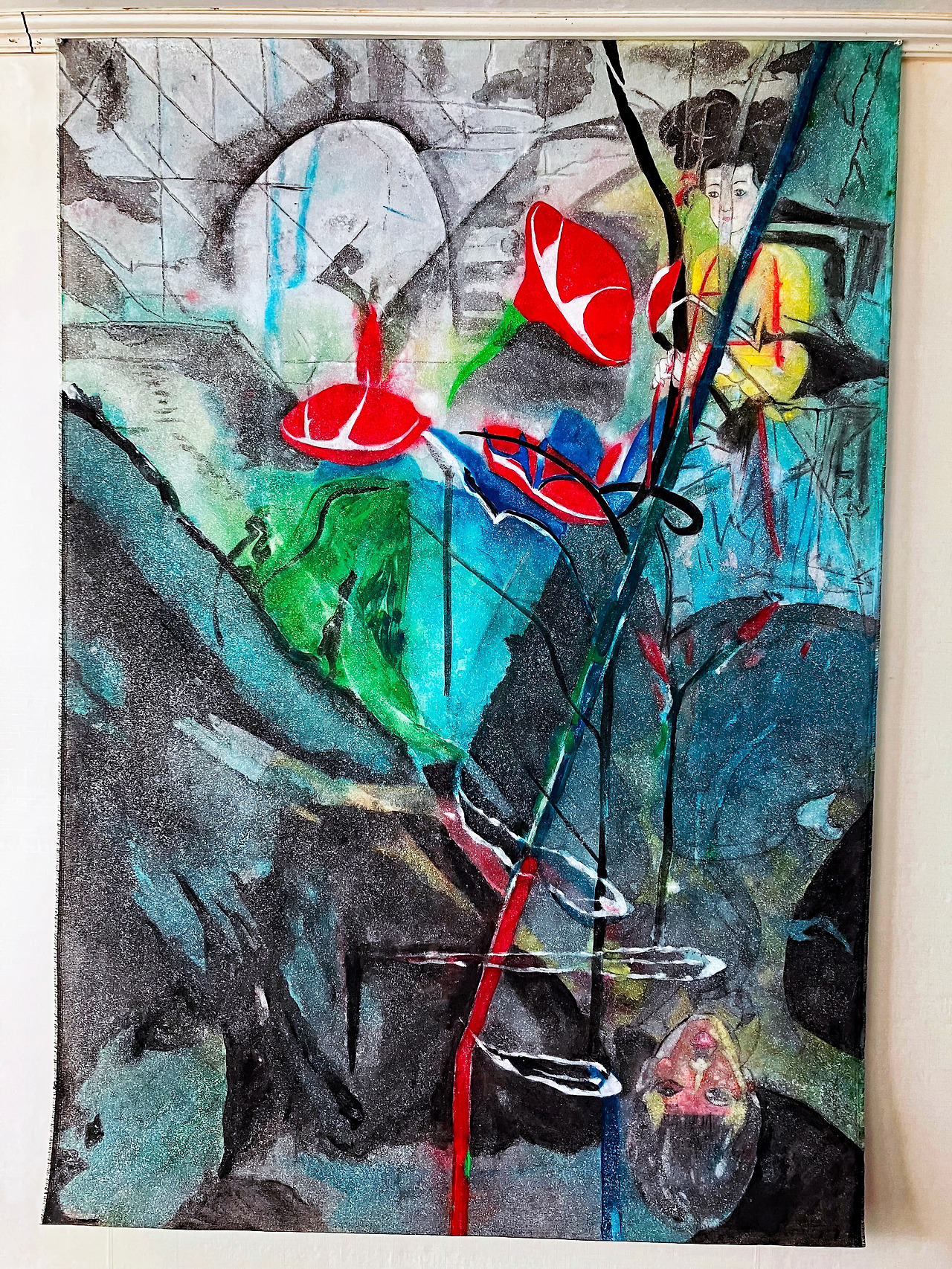
Louis Chul-joo Choi, morning glory 2025-1-Pond Rendering Reflects Current Desire, 113X164cm, acrylic and composite materials on cloth, 2025
Pond Rendering Reflects Current Desire
A new mathematical structure is Choi Chul-Joo's Desire Formula to design an aesthetic structure as a result of the concept of desire.
As an object of a pond reflecting the present desire, when it has an aesthetic meaning by facing the desire of the other in the image of the event, it represents the concept of abstract desire as an actual abstraction and the structure of the desire of the other.
As an aesthetic structure in the pond of desire, the subject is a pop art image that models unconscious desire as an existential reality by dividing the concept of desire, which is the same as the event image, into unconscious and real images.
The concept of absolute desire in the form of a pond in the present desire is a symbolic metaphor seen in abstraction, and the concept of desire abstracts the desire of others, but does not exceed the category of imitative painting.
While accepting the difference from the actual image in abstract desire as the meaning of the linguistic concept, it abstracts the actual structure created by the linguistic meaning of desire facing the abstraction that constitutes the structure of desire and relationship with desire. This is Choi Chul-joo's conceptual abstraction of desire, which is free from the social constraints (制約) that can be accepted in religious customs and hides the formative reality of desire in painting and abstracts the event image based on the news of reality.
Therefore, the subject that speaks linguistic meaning is an act of speech (enunciation) that specifies the elements that depend on the news for the viewing effect of colloquial language and event video broadcasting as an expressive aesthetic structure of enunciation, and represents abstraction, the true value of the concept of desire.
The interpretation of the concept of desire in a linguistic sense in which the abstract and reality of the concept of desire are the same represents the structure of desire by forming a semantic relationship with desire as a real image in which the reality of the abstract concept of desire is the causal structure of desire. In other words, antinomic equivalence represents the structure of desire by forming a semantic relationship with desire as a real image in which the reality of the abstract concept of desire is the causal structure of desire from an aporia image.
In the abstraction of real image as a desire structure, the morphological image of visible metaphor is transferred to abstract language meaning. The abstraction is a transitional fixation as an abstract meaning in which the desire structure of the shape is obscured as a real image. In other words, in abstraction, the actual form meaning is transformed into an additional form by the desire of others as an image of social events.
Like Kant, this is a dual structure up to modern art, and it encompasses mythical objects in the same structure as humans and includes antinomic distribution as a single structure.
Therefore, through the gaze of the rational subject, the object as an event image, which is the same rational object as the linguistic meaning of the desire structure, is recognized as a real image that cannot be seen by the subject staring from an antinomic position.
In Manet's "Lunch on the Grass", seen as the concept of Choi Chul-joo's desire, the man in a suit is a symbolic world that identifies his image while recognizing subjectivity as a toddler. A man in a suit is a structure of perception of an infant by continuous social regulations from the time when he dressed up and expressed a rational view of morality to the 19th century. It recognizes that it is wrong for women and men to take off their clothes in an open space exposed to the outside reflected in the same mirror structure as a pond, and recognizes that a man in a suit is the subject of the image, unlike a nude woman.
This is a real image of a mirror structure that deviates from incomplete abstraction lacking desire due to the subordination of the desire structure to diachronic sociality and returns the cause of the desire concept to the object by rendering the desire structure.
In this way, the rendering of the pond image as a mirror structure is a flat sign that will be real in the concept of abstract desire, and the event image carves the abstract desire that expresses the concept of desire of others into reversible light shades and obscures it into the dimension of the image projected in the visual range.
In the pond image, the subject of desire rejects the pictorial meaning of abstraction and reveals the reality of the illusion hidden in conventional reason by revealing it as an image of reality rather than an abstract structure by fluid fixation. This reveals the real image as a reality of invisible desire, destroying the fixation of the contemporary absolute illusion in "Pond Rendering Reflecting Current Desire".
The abstract concept of desire, in which the desire structure represents a mirror, is confirmed as reality the unstable self of desire, which represents the place of the real space, and the image of desire reflected in the pond is composed.
This is a realization of the desire image as a shaded contrast structure of reversible light by contrasting the involuntary desire that reflects the symbolic meaning of the concept of desire on the surface with the real image.
Here, the pond divides the desire structure as a mirror structure and equates the desire of the other with the self by reflecting the concept of desire on the surface as a real image.
The desire is an object, and the event image and linguistic meaning are connected structures, and instead of abstracting desire after serializing design, the linguistic meaning as the subject of the concept of desire is directed as a real image.
In this way, the subject that identifies the image of another's desire reflected in the pond reveals the linguistic meaning of the structure that symbolizes the concept of unconscious desire of the self in reality, and leaves the image of desire and gaze in the shadow.
Therefore, in order for the actual image reflected in the pond to be close to the actual rule of reality in which desire is hidden in the shadow structure, Choi Chul-joo's abstract design process connects the concept of desire and sketches the height of the texture of the object according to the multi-reflection of light on the water surface.
The background of desire and the object spectral rendering are performed by superimposing multiple lights in the same place when illuminated on a pond sketch reflecting the present desire.
This fixes the concept of desire as an actual desire image as a predictive value that can be stared at when the texture color of an object becomes metamorphism depending on the illumination color or is perceived as a different color is reflected in reversible light.
In the fixed sketch image of the concept of desire, the linguistic meaning is retroactive, and the desire structure is completed on the surface of the pond.
The object of desire stitched by reversible light that reflects the surface of the pond is composed of the unique colors of reality.
And a reversible light is projected onto an object of desire, sculpted and reflected in the shadow of reality, resulting in a real image that is stared at.
Thus, unlike perspective visual systems, Pond rendering, which reflects current desires, repeatedly designs symbolic reality images with overlapping surfaces and backs depending on the temporality of the desire structure to outline them, and creates the texture of desire with multiple reversible lights on the same surface to achieve the same structure as a single image. / Writing. Choi Chul-joo, a contemporary art critic (Doctor of Cultural Design)

The figurative meaning of the conceptual abstract 'morning glory' is that the color of meaning decorates the reality of customary universality facing the object with the color of light. The dark blank space is a shadow created in the area of the subject, which contrasts with the light of a decorated shape. Here, as a real object, color is a single-phase image of the desire custom seen through the gaze. This is a symbolic linguistic image of the background of desire, which symbolizes the concept of desire with imitated flowers. Here, the morning glory image is a piece as a meaning of desire symbolized in real space as a result of the desire image.
"morning glory" expresses the lack of the concept of desire that exists in reversible temporality as a phenomenal image, and expresses the structure of desire obscured by the shade of reversible light in the intermediate stage, which represents the existence of various desires beyond the current abstract structure of color and plane.
And by expressing the absence of the concept of desire in reversible temporality as a phenomenal image, "morning glory" expresses the mirror image reflected in the "pond" to abstract the structure of reality from the desire hidden in the shade of reversible light in the intermediate stage, which represents the existence of various desires beyond the current abstract color and planar structure.
■ Choi Chul-joo's concept of desire design process "morning glory" by Choi Chul-joo is a reconstruction of the imagination of desire that is recognized as a structure of desire and the reality reflected in the mirror as a background of desire established as a visual structure. "Bamboo Forest" is the shadow that hides the reality in the shadow of reversible light in his desire concept design process. And "The Missing Pond" is an abstract language image that reflects the reality of the concept of unconscious desire as a linguistic structure.
Therefore, Choi Chul-joo's concept of desire visualizes the concept of desire as a linguistic representation of the "disappeared pond" structure of symbolic reality, reducing the concept of abstract desire to a real image in the category of modern art's ideal Logos expression.
The progress of this symbolizes the object of desire as a conceptual subject as a design process of the conceptual subject of desire.
Choi Chul-joo's concept of desire to design abstraction in contemporary art does not presuppose causality with the real image, but symbolizes the object of desire as a conceptual subject from an abstract concept in which desires alienated by the unconscious are divided, resulting in an abstract real image as a correlation between real images.
In linguistic abstraction, the meaning of abstraction as a real image is inductively inferred to take the meaning of symbolic existence.
And the view of the image of its existence abstracts the concept of desire to the outside of reality, and the real image becomes the object of abstraction as the correlation of reality with the concept of desire. This is Choi Chul-joo's concept of desire design process 1.
The actual image symbolized by the design using the object of abstract desire as the conceptual subject is omitted, and the image is flattened in the visible range of light. And the image is represented as a symbolic structure of the concept of desire, which is spoken in a linguistic sense.
Choi Chul-joo's concept of desire design process 2 is to decorate the object with a color of universal reality that matches customs so that the reality of the symbolic structure represented in this way has an aesthetic value corresponding to the place as a single image.
The aesthetic structure concealed by the image designed as the concept of desire is divided into clouds and obscured shades, and the concept of desire is visualized as an image in various directions in the opposite direction of the concept of desire and the image, and the subject of the structure of desire created in the social environment is represented as an object in the past to recognize the image as an abstraction. And the subject who drew the existence executes the reality that symbolizes the concept of desire as an agent, and turns abstract desire into an image's mental phenomenon.
And Choi Chul-joo's abstract concept of desire is created by the imagination desired by the subject of desire in selecting an image of an abstract desire object in the unconscious.
As an abstract image, the concept of desire design process 3 is to repeatedly design a desire that combines lines and colors as an unconscious act that is in thought but is not conscious.
The concept of unconsciously abstracting desire is a sculpture image of reality in which the object of reality is not seen as a reversible shadow of light, and shows another image of reality by concealing reality as a shadow.
The image is an unconscious mind maintained by the real image and the imagination desired by the subject of desire, and is an idea that cannot be recognized by that image.
Desire Concept Design Process 4. is designed by combining the spatial composition of desire, in which the image of desire is a sculpted planar monochromatic painting in reality, into a reversible structure of light through conscious movement.
In this way, Choi Cheol-joo's concept of desire design appears as an object of desire as another abstract reality in the perspective visual system through his concept of desire design process.

Choi Chul-joo, MONSTA X's "Let me be your fantasy" 5, Conceptual Artwork Criticism: Louis Chul-joo Choi, newsmanwha K-Pop Song illustratoin [7] MONSTA X <Let me be your fantasy> Online Live. (2020-5-27) / Reporter Choi Chul-joo’s Cartoon Review
■ Art Critic Choi Chul-joo's Visual Culture Column: To weave pink cloth in waves in a dark place as if it were your last life. = The temporality of light brightened by overlapping light is real in a realistic structure that removes real images and expresses them as shadows.
In addition, Choi Chul-joo's theory of desire art, which interprets reality as a realistic abstract, is embodied in a shade covered with a bamboo forest depicting the subject of "morning glory" the background of desire.
Famous contemporary artist, modern painter, abstract painter & contemporary abstract artist Louis Choi Chul-joo's treacherous conceptual art abstraction 'Morning Glory' & 'Bamboo Forest' pop art abstraction design / Webtoon News Cartoonist & Contemporary Artist Choi Chul-joo Cartoon Design News
Webtoon News Cartoonist Choi Chuljoo's One-Sentence Cartoon Review & Abstract Artist Louis Choi Chul-joo Pop Art Abstract Painting design
Cartoon designer Choi Chul-joo, contemporary conceptual art pop art work & Webtoon design historical painter
Abstract painting as a treacherous conceptual art refers to abstract painting as a realistic structure in art. Since the conceptual meaning that exists in the place of the realistic shape can be divided into cartoon review images, abstract painting is drawn through the shadow of reversible light that interprets others abstract desires into images. In other words, the emergence of the concept of desire is a momentary encounter with the concept of desire in a straight form of non-realistic image generated by reversible light.
The image of non-realism, which emerged as the concept of desire, is a distorted form of similar factual structure. This is because the place and shape of the real form are not the same.
Realistic structures reflect the shape by being distorted by light. It is the outline and shadow that are determined by the shade of light that reveals its shape. Realistic abstractions as treacherous conceptual art take note of this and shape realistic concepts.
(Choi Chul-joo's Conceptual Art Theory on Realistic Abstract Painting)
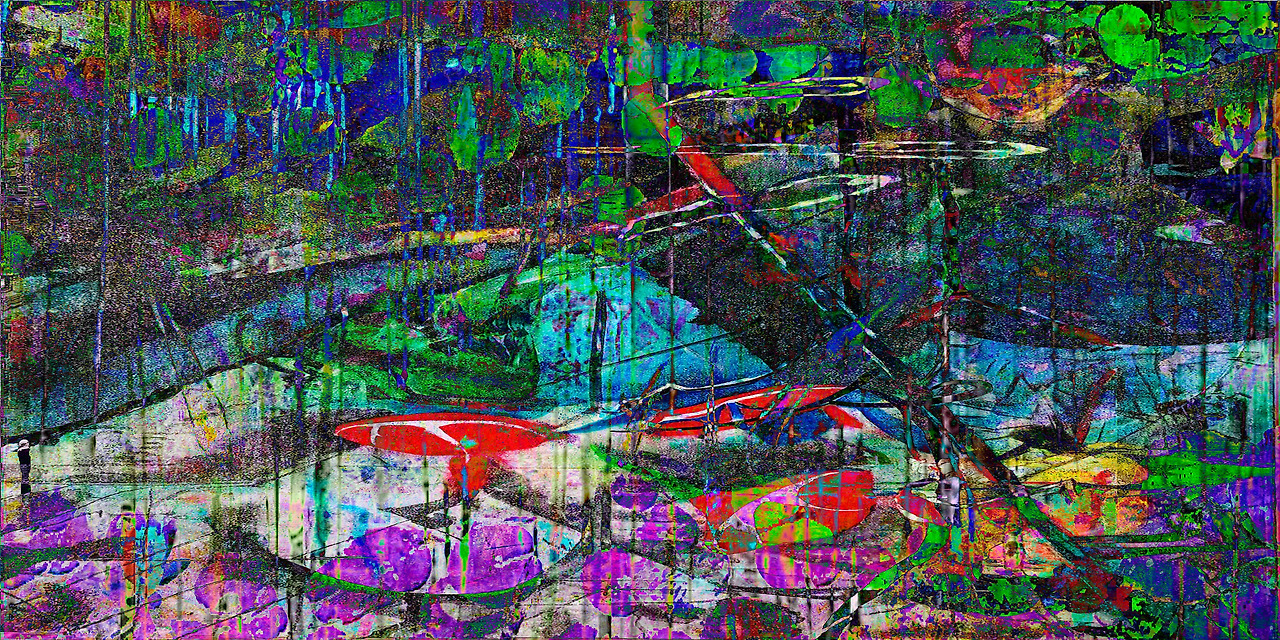
Louis Choi chuljoo, In front of the bamboo forest Bamboo Forest Bamboo Forest k271-Pond Rendering Reflects Current Desire-pond-mirror
Conceptual semantic structure Abstraction of modern art converts images of the desires of others designed as pop art sketches into abstraction through cartoon criticism. This abstractly illuminates the desire to reconstruct the external phenomena of socio-cultural objects of contemporary art into photographs of events and to express the specific validity of others through the objective perspective of images, the subject of desire. This effect is an easy example of modern art abstraction by abstracting the desires of others into cartoons from the objects in which the event occurred, and interpreting cartoon analysis as a cultural form of modern art to evaluate the value of life. It's a treacherous conceptual art called realistic abstraction, the cartoon news of modern realistic abstraction.
- Conceptual artist, contemporary artist, abstract painter, media artist, pop artist, cartoonist & cartoon critic Choi Chul-joo cartoonist, pop artist, contemporary art work, pop artist who draws webtoon news, contemporary artist, concept artist, cartoon critic Choi Chul-joo.
- Choi Chul-joo, contemporary cartoon art historical painting & contemporary concept image installation artist's work
Abstract painting as a treacherous conceptual art refers to abstract painting as a realistic structure in art. Since the conceptual meanings present in the place of the realistic shape can be divided into cartoon review images, the abstraction is drawn through a reversible shade of light that interprets another person's abstract desire as a cartoon review image as an image.
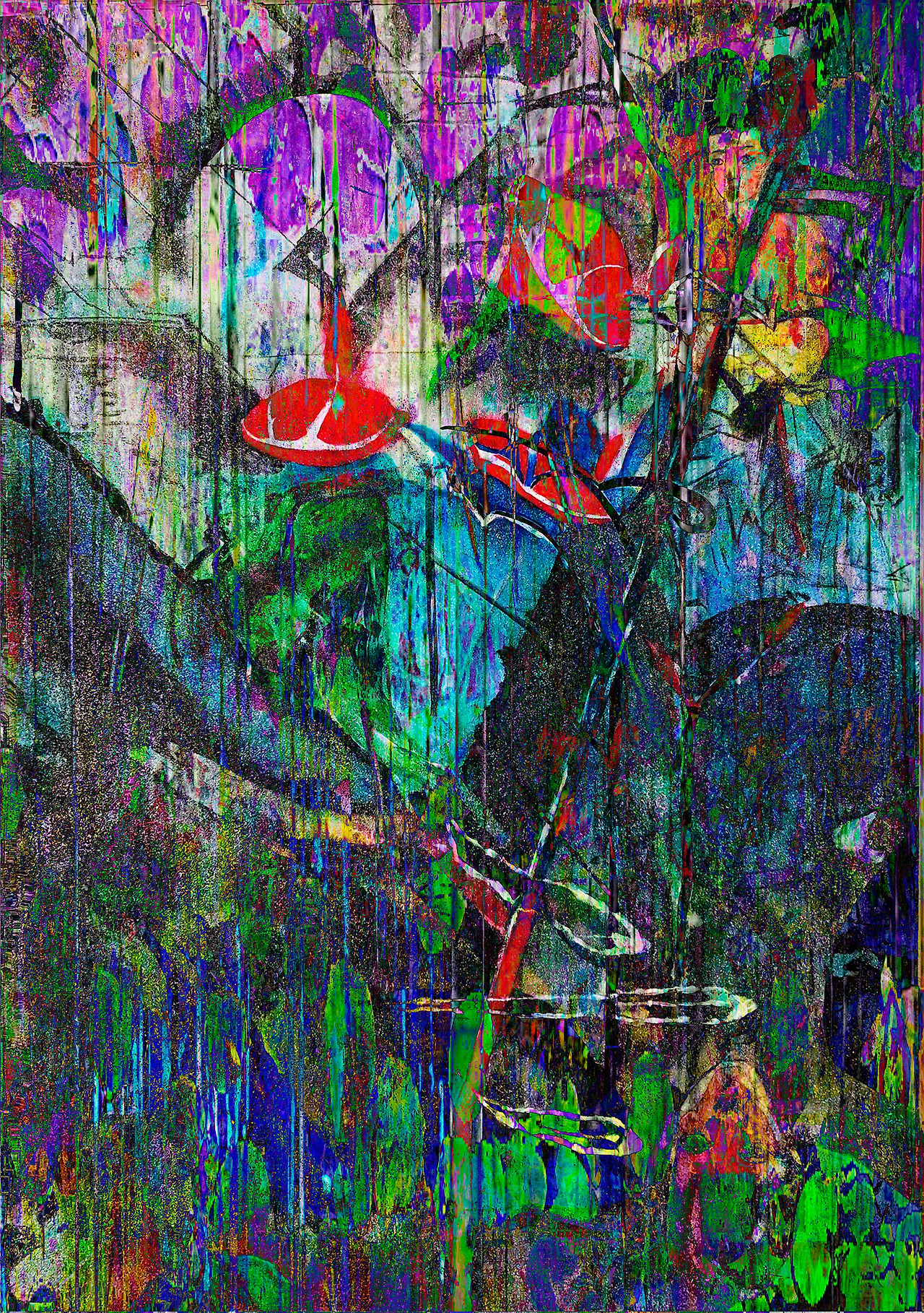
Louis Choi Chul-joo, morning glory p132-8-Pond Rendering Reflects Current Desire: Abstract painting as a treacherous conceptual art refers to abstract painting as a realistic structure in art. Since the conceptual meanings present in the place of the realistic shape can be divided into cartoon review images, the abstraction is drawn through a reversible shade of light that interprets another person's abstract desire as a cartoon review image as an image.

Contemporary Art Work: Abstract Painting with Treacherous Conceptual Art: Louis Chul-joo Choi, bamboo forest 271-Pond Rendering Reflects Current Desire, a hand-painted picture on a computer/ Reinterpreting cartoon news review, which uses modern art abstract painting as treacherous conceptual art, as a conceptual artist's work

Desire Concept Realistic Abstract Work: Louis Choi chuljoo, In front of the bamboo forest k271-Pond Rendering Reflects Current Desire: By repeatedly applying the concept of imaginary world and desire and Choi Chul-joo's desire formula <D(I...I')d=I(D...D'i)i> to the image of the work, it acquires aesthetic value and reveals its meaning by realizing formability in the shadow of reversible light. / The meaning of the shape, which is covered by the actual changed instantaneous movement of the shape, results in linguistic abstraction. In other words, the realistic shape of the other person's desire in a momentary event is a linguistic abstraction of the same meaning. Conceptual art with morning glory and bamboo as cultural background is linguistic abstraction. The abstract creates a conceptual structure based on the shape of subsequent reality fostered by language and hides the desire of others in a momentary event.

Contemporary Art Work: Abstract Painting with Treacherous Conceptual Art: Louis Choi Chul-joo, Bamboo Forest k271-Pond Rendering Reflects Current Desire-pond: By repeatedly applying the concept of imaginary world and desire and Choi Chul-joo's desire formula <D(I...I')d=I(D...D'i)i> to the image of the work, it acquires aesthetic value and reveals its meaning by realizing formability in the shadow of reversible light.
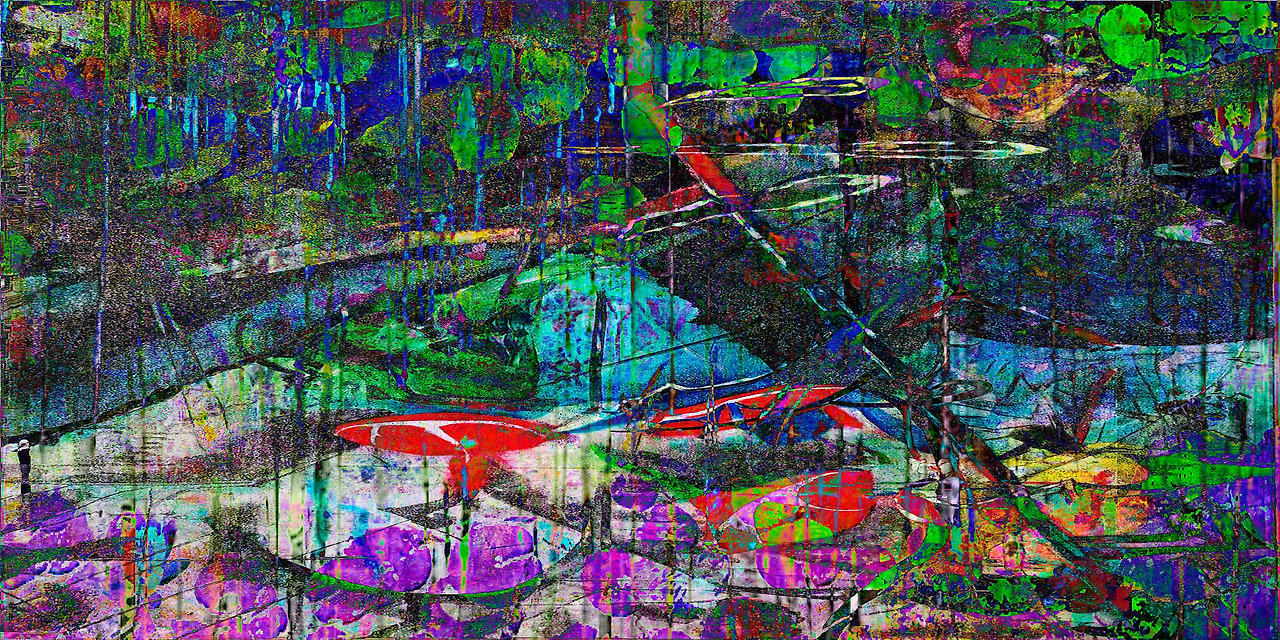
Desire Concept Realistic Abstract Work: Louis Choi chuljoo, In front of the bamboo forest Bamboo Forest Bamboo Forest k271-Pond Rendering Reflects Current Desire-pond-mirror: By repeatedly applying the concept of imaginary world and desire and Choi Chul-joo's desire formula <D(I...I')d=I(D...D'i)i> to the image of the work, it acquires aesthetic value and reveals its meaning by realizing formability in the shadow of reversible light. / The meaning of the shape, which is covered by the actual changed instantaneous movement of the shape, leads to verbal abstraction. In other words, the shape in which the other's desire is realistically revealed in a momentary event is a linguistic abstraction with the same meaning. Conceptual art with morning glory and bamboo as a cultural background is linguistic abstraction.
Abstraction creates a conceptual structure reflected in a pond based on the shape of subsequent reality fostered by language and hides the desires of others in instantaneous events.And Choi Chul-joo's concept of desire visualizes the concept of desire as a linguistic expression for "morning glory" reflected in the "pond" structure of symbolic reality, reducing the abstract concept of desire to a real image in the category of ideal desire expression in contemporary art.
In addition, as a process of designing the concept of desire, the object of desire is symbolized as a conceptual subject, forming a reality expressed through desire revealed in the oppressed unconscious through design and revealing abstraction as existence

Contemporary Art Work: Abstract Painting with Treacherous Conceptual Art: Louis Chul-joo Choi, bamboo forest 236-Let me be your fantasy, a hand-painted picture on a computer/ Reinterpreting cartoon news review, which uses modern art abstract painting as treacherous conceptual art, as a conceptual artist's work
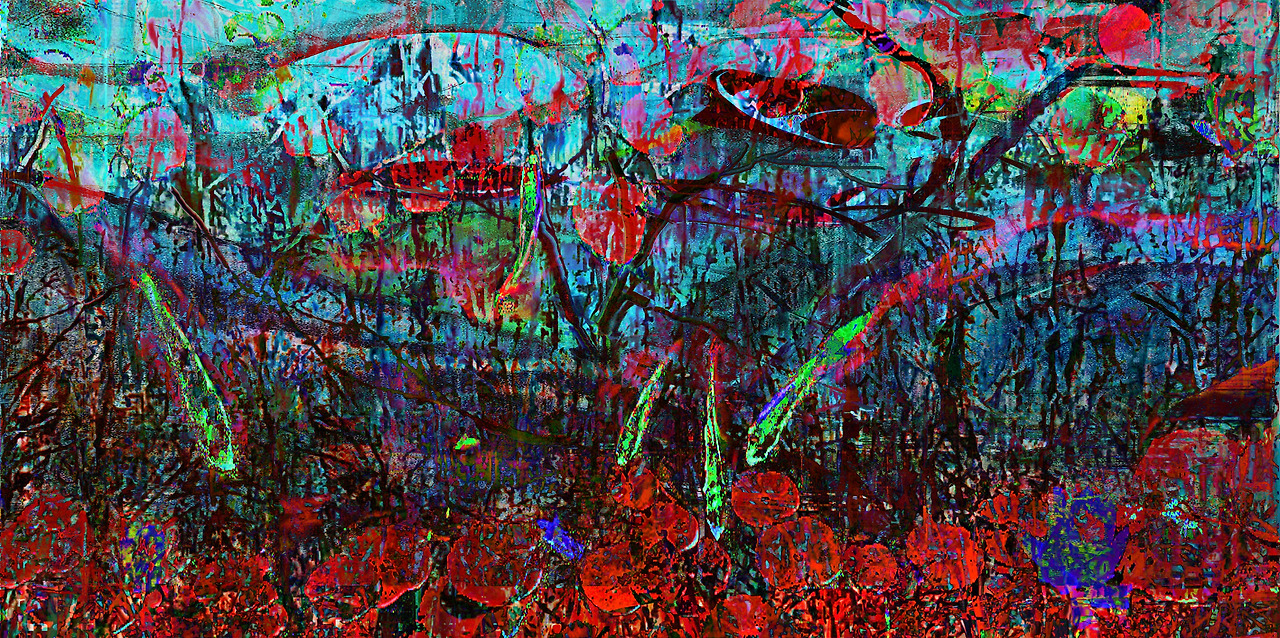
Desire Concept Realistic Abstract Work: Louis Choi chuljoo, In front of the bamboo forest i236-Let me be your fantasy: By repeatedly applying the concept of imaginary world and desire and Choi Chul-joo's desire formula <D(I...I')d=I(D...D'i)i> to the image of the work, it acquires aesthetic value and reveals its meaning by realizing formability in the shadow of reversible light. / The meaning of the shape, which is covered by the actual changed instantaneous movement of the shape, results in linguistic abstraction. In other words, the realistic shape of the other person's desire in a momentary event is a linguistic abstraction of the same meaning. Conceptual art with morning glory and bamboo as cultural background is linguistic abstraction. The abstract creates a conceptual structure based on the shape of subsequent reality fostered by language and hides the desire of others in a momentary event.

Contemporary Art Work: Abstract Painting with Treacherous Conceptual Art: Louis Choi Chul-joo, Bamboo Forest i236-Let me be your fantasy-pond: By repeatedly applying the concept of imaginary world and desire and Choi Chul-joo's desire formula <D(I...I')d=I(D...D'i)i> to the image of the work, it acquires aesthetic value and reveals its meaning by realizing formability in the shadow of reversible light.

Desire Concept Realistic Abstract Work: Louis Choi chuljoo, In front of the bamboo forest Bamboo Forest Bamboo Forest i236-Let me be your fantasy-pond-mirror: By repeatedly applying the concept of imaginary world and desire and Choi Chul-joo's desire formula <D(I...I')d=I(D...D'i)i> to the image of the work, it acquires aesthetic value and reveals its meaning by realizing formability in the shadow of reversible light. / The meaning of the shape, which is covered by the actual changed instantaneous movement of the shape, leads to verbal abstraction. In other words, the shape in which the other's desire is realistically revealed in a momentary event is a linguistic abstraction with the same meaning. Conceptual art with morning glory and bamboo as a cultural background is linguistic abstraction. Abstraction creates a conceptual structure reflected in a pond based on the shape of subsequent reality fostered by language and hides the desires of others in instantaneous events.And Choi Chul-joo's concept of desire visualizes the concept of desire as a linguistic expression for "morning glory" reflected in the "pond" structure of symbolic reality, reducing the abstract concept of desire to a real image in the category of ideal desire expression in contemporary art.
In addition, as a process of designing the concept of desire, the object of desire is symbolized as a conceptual subject, forming a reality expressed through desire revealed in the oppressed unconscious through design and revealing abstraction as existence

Louis Chul-joo Choi, morning glory p132-2=Pond Rendering Reflects Current Desire, a hand-painted picture on a computer
Desire Concept Realistic Abstract Work: Louis Choi chuljoo, morning glory p132-2=Pond Rendering Reflects Current Desire: By repeatedly applying the concept of imaginary world and desire and Choi Chul-joo's desire formula <D(I...I')d=I(D...D'i)i> to the image of the work, it acquires aesthetic value and reveals its meaning by realizing formability in the shadow of reversible light. / The meaning of the shape, which is covered by the actual changed instantaneous movement of the shape, results in linguistic abstraction. In other words, the realistic shape of the other person's desire in a momentary event is a linguistic abstraction of the same meaning. Conceptual art with morning glory and bamboo as cultural background is linguistic abstraction. The abstract creates a conceptual structure based on the shape of subsequent reality fostered by language and hides the desire of others in a momentary event.
The visualization of the concept of desire: Visualizing the concept of desire is a cartoon depicting events and performances manually, expressing the background of the cartoon as a landscape of desire with "morning glory" and "Bamboo Forest," and the cartoon image reconstructs desire into an abstract and realistic picture.
Desire Design Methodology in Abstract Art Theory on Painting Design, Contemporary Artist Choi Chul-joo's Desire Concept Abstract Design Methodology: <morning glory p132-2=Pond Rendering Reflects Current Desire> As an Abstract Korean painting of Modern Art, Desire Formula <D(I...I')d=I(D...D'i)i> is applied to overlap the painting <Louis Choi Chul-joo, morning glory p132, a hand-painted picture on a computer> created by reversible light. In addition, by re-applying the desire formula by linking verbal metaphor images, a phenomenal conceptual place is set in another place in one space as a shade of reversible light and abstracted.
This translates to the first non-realistic abstraction poster at Louis Choi Chul-joo's 2022 New York Exhibition to actualize the Desire Object. The image <Louis Choi Chul-joo, morning glory p132-2=Pond Rendering Reflects Current Desire, a hand-painted picture on a computer> becomes a non-real abstraction of reality.
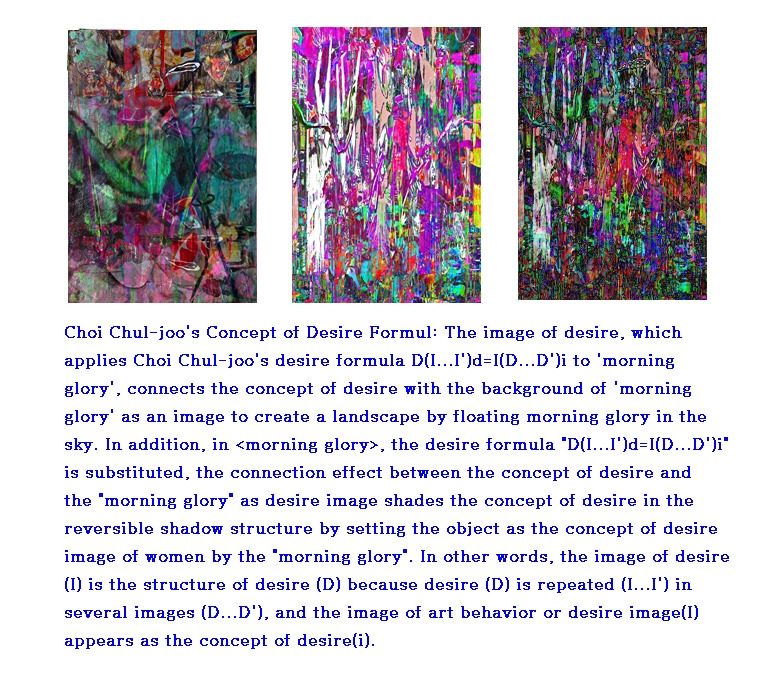
By repeatedly applying the concept of imaginary world and desire and Choi Chul-joo's desire formula <D(I...I')d=I(D...D'i)i> to the image of the work, it acquires aesthetic value and reveals its meaning by realizing formability in the shadow of reversible light. / The meaning of the shape, which is covered by the actual changed instantaneous movement of the shape, results in linguistic abstraction. In other words, the realistic shape of the other person's desire in a momentary event is a linguistic abstraction of the same meaning. Conceptual art with morning glory and bamboo as cultural background is linguistic abstraction. The abstract creates a conceptual structure based on the shape of subsequent reality fostered by language and hides the desire of others in a momentary event.
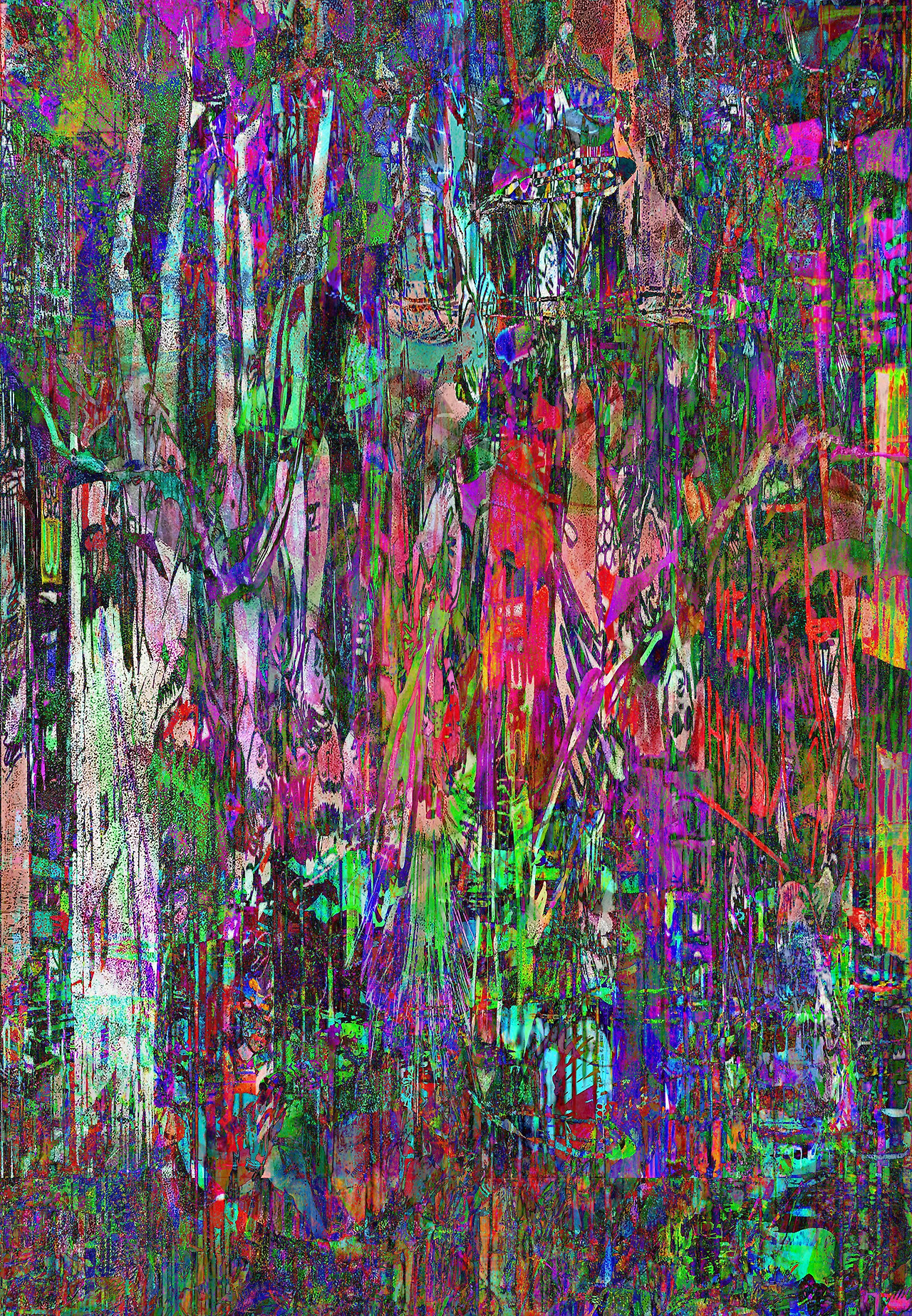
Louis Chul-joo Choi, morning glory p133-1-21-Pond Rendering Reflects Current Desire, a hand-painted picture on a computer
By repeatedly sketching design and applying Choi Chuljoo's desire formula "D(I...I')d=I(D...D'i)i" to the conceptual image of desire, it instantly acquires aesthetic value and reveals the meaning of abstract desire by realizing realistic formability in the shadow of reversible light at that moment. / The abstract meaning of the shape in which the actual changed instantaneous desire shape is hidden by the reversible movement of light results in linguistic abstraction. In other words, it is verbal abstraction with the same meaning as a realistic form of the other person's desire in a momentary event or performance scene. Choi Chul-joo's conceptual art with morning glory and bamboo as the background of cultural abstraction is the linguistic abstraction of images. The abstraction creates a conceptual structure based on the shape of reality after the meaning fostered by language and hides the abstract desire of others in momentary events and performance scenes.
Therefore, conceptual abstract painter Louis Choi Chul-joo's "Louis Choi Chul-joo, morning glory p 133-1-21-Pond Rendering Reflects Current Desire, a hand-painted picture on a computer" is a desire image of a real structure that is reconstructed into a reversible structure of light as an image of the concept of desire created from a transformed image meaning the reality of morning glory.a New Yorker's private collection
Therefore, conceptual abstract painter Louis Choi Chul-joo's "In front of the bamboo forest Bamboo Forest Bamboo Forest i236-Let me be your fantasy-pond-mirror" is a desire image of a real structure that is reconstructed into a reversible structure of light as an image of the concept of desire created from a transformed image meaning the reality of morning glory. And Choi Chul-joo's concept of desire visualizes the concept of desire as a linguistic expression for "morning glory" reflected in the "pond" structure of symbolic reality, reducing the abstract concept of desire to a real image in the category of ideal desire expression in contemporary art.
In addition, as a process of designing the concept of desire, the object of desire is symbolized as a conceptual subject, forming a reality expressed through desire revealed in the oppressed unconscious through design and revealing abstraction as existence.

Background image of an artist's artwork: Louis Choi Chul-joo, the bamboo forest 236, a hand-painted picture on a computer

Background image of an artist's artwork: Louis Choi Chul-joo, morning glory p132, a hand-painted picture on a computer
Choi Chul-joo's concept of desire Abstract design concept is a new abstract art methodology that embodies modern abstract concepts transformed from Romanticism to Abstract as real images, starting from the modern art movement.
One conceptual art creates a dual place with the concept of the selector's desire rather than abstract, overtakes abstract conceptual art in the dual place, and repeatedly designs a reality image as a semantic entity with the abstractly deficient desire structure desired by the selector as the subject.
The conceptual aesthetics of figures that design the reality of desire are the result of designing a lack of empirical desire to abstract aesthetic experience into objective reality as a value of life, and formative value is obtained from real images by satisfying the lack of necessary objects.
Here, the object of desire is insufficient and follows the other's concept of desire to obtain semantic correlation through empirical consciousness movements.
Therefore, the actual image as a structure of desire has an aesthetic value that conforms to the conventional practice by omitting shadow images from the real world and placing them in the range of light due to the concept of desire, and settles in the structure of the real subject and the essence of reality. By inductively illuminating the concept in the reversible shadow of light, it clearly embodies the linguistic meaning of the image and the real phenomenon.
By inductively illuminating the concept in the reversible shadow of light as a real image of desire, the linguistic meaning and real phenomena of the image are clearly embodied like mathematics.
As a specific object and subject composed of the psychological vector of the concept of unconscious desire in the real image, the instruction vector in which desire is opposed to each other's gaze creates a lack of desire.
In this way, mathematics is an abstract science based on the concept of desire, which goes through abstract design as an axiom and results in reality as a concrete phenomenon rather than based on the external structure of the linguistic meaning.

Final image superimposed on the artist's work:: Louis Chul-joo Choi, the Missing pond, 112X249cm, acrylic and composite materials on cloth, 2024:
The actual image has a perspective tone of the symbolism of the reality of the desire structure deposited in the pond. At the same time, as a figurative image that characterizes contemporary linguistic meaning, it creates a frame on the boundary of the pond for the desire of the other, creates an abstraction of the abstract desire structure as an image of an actual object, destroying the phenomenal symbolic system of conceptual abstraction with lines and colors, and forming an image suitable for the purpose desired by the subject as a reality.
In this way, the desire image constitutes a desire position as an inevitable object that the subject desires, acquires pictorial value as a real image of a linguistic concept, and uses linguistic abstract meaning to mark the inner concept of desire as an external image.
Linguistic abstraction is the structure of desire, and the background of desire, which establishes Lacan's imagination and reality reflected in the mirror as a visual structure, is Choi Chul-joo's "morning glory". In the design process of his concept of desire, the shadow that hides the reality in the shadow of reversible light is "Bamboo Forest". And the abstract language image that reflects the reality of the concept of unconscious desire as a linguistic structure is "The Missing Pond".
Therefore, Choi Chul-joo's concept of desire visualizes the concept of desire as a linguistic representation of the "disappeared pond" structure of symbolic reality, reducing the concept of abstract desire to a real image in the category of modern art's ideal Logos expression.
In addition, as a design process of the concept of desire, the object of desire is symbolized as a conceptual subject, forming the reality expressed through desire revealed in the suppressed unconscious through design and revealing abstraction as being.
The design of Choi Chul-joo's concept of desire, which has been realized as an abstract, abstracts the actual meaning of the concept of desire by superimposing the news cartoon image published as a news desire image with the background of desire, "Morning glory," "Bamboo Forest," and "Pond." This is a conscious expression act, and the meaning of the recognition as a subject and the lack of unconscious desire background is a dual desire structure.
In a sense, it is shared with the present in one empty space that is not in contact with the object space, but it satisfies the temporality of the object when it comes into contact with another object in a shared place,
Therefore, when light comes into contact with multiple objects, existing and past objects form a place of light according to various timeliness in the same place, and unconsciousness and consciousness intersect in the current shared place, Here, the structure of desire where unconsciousness and consciousness intersect is captured by the instantaneous impression of events and action images, the concept of abstractly illuminating the background of everyday desire is clearly embodied, and the abstract image of desire that illuminates the concept in inductively reversible shades of light results in universal reality.
Memory is the light of time, and as the subject of desire, an image with the ego of desire and the place where the image exists as the subject of desire and desire is set up, and the memory of desire creates a place where the ego of the subject of desire and the real image exist in the present.
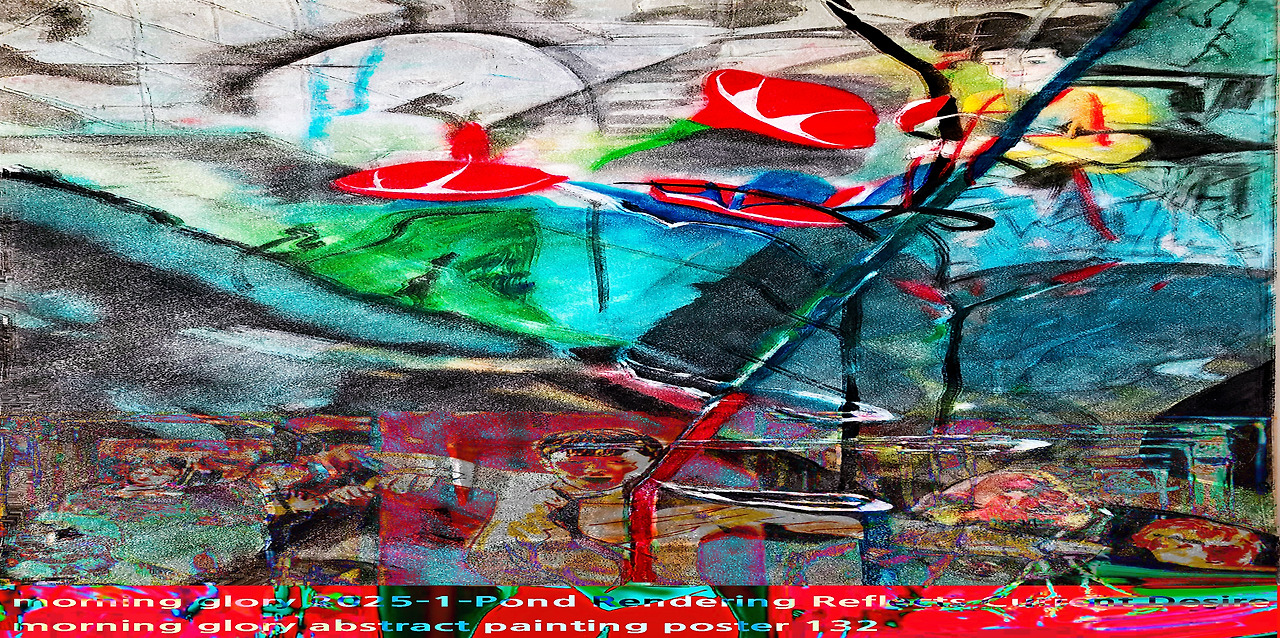
Louis Choi Chul-joo, I Will Be Your Fantasy 20/ The visualization of the concept of desire: Visualizing the concept of desire is a cartoon depicting events and performances manually, expressing the background of the cartoon as a landscape of desire with "morning glory" and "Bamboo Forest," and the cartoon image reconstructs desire into an abstract and realistic picture./ [The interpretation of words in a cartoon news ː l’interprétation du mot dans une nouvelle caricature] ■ Newsmanwha K-pop Song Illustrator [7] Monsta X <I Will Be Your Fantasy> Online Live. (2020-5-27) / Reporter Choi Chul-joo review cartoon / Choi Chul-joo, a current affairs critic, was a reporter at the Ministry of Culture of the News Busan Internet Newspaper. He is a cultural design critic and abstract artist who paints Current affairs cartoon cartoons News and abstract paintings in contemporary :art works and webtoons.
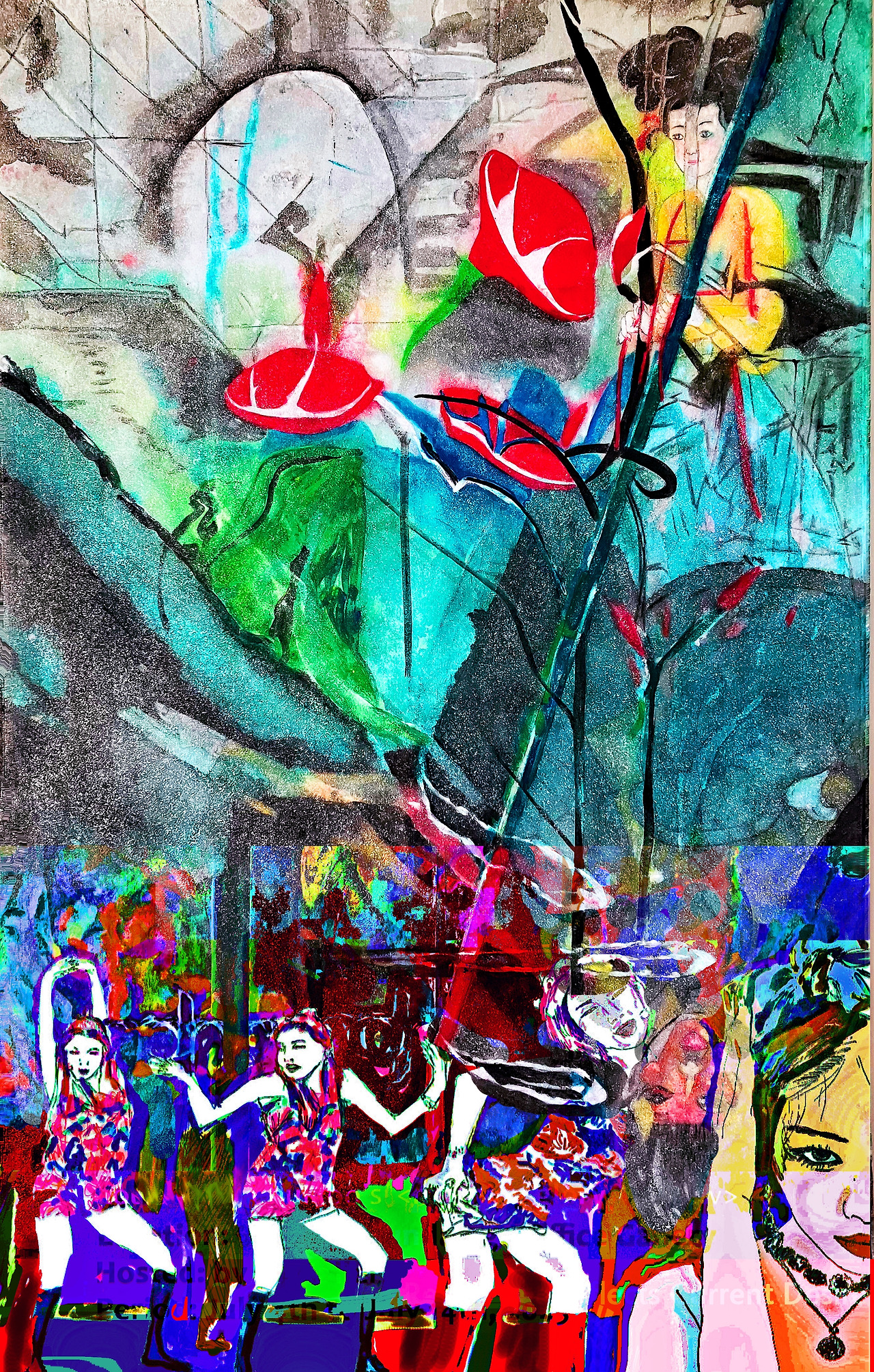
Louis Chul-joo Choi, morning glory p132-3, a hand-painted picture on a computer
Choi Chul-joo's Desire Formula is a multiplication formula that uses I/I (image) and D/d (design) as symbols to generate a polynomial desire image by connecting the number of design images with event and performance images. The linguistic meaning of an image as a symbol is an image (I/i) of the concept of desire to identify the abstract concept of desire.
As an abstract artist, Choi Chul-joo's contemporary conceptual art is an abstract art that abstracts the concept of real formability and reversible shadow of light as unrealistic beings according to the desires of others. This is an abstraction of the other's desire to replace the real place, that is, the other's desire to represent the real place.
Choi Chul-joo's concept of desire Abstract design concept is a new abstract art methodology that embodies modern abstract concepts transformed from Romanticism to Abstract as real images, starting from the modern art movement.
One conceptual art creates a dual place with the concept of the selector's desire rather than abstract, overtakes abstract conceptual art in the dual place, and repeatedly designs a reality image as a semantic entity with the abstractly deficient desire structure desired by the selector as the subject.
The conceptual aesthetics of figures that design the reality of desire are the result of designing a lack of empirical desire to abstract aesthetic experience into objective reality as a value of life, and formative value is obtained from real images by satisfying the lack of necessary objects.
Here, the object of desire is insufficient and follows the other's concept of desire to obtain semantic correlation through empirical consciousness movements.
Therefore, the actual image as a structure of desire has an aesthetic value that conforms to the conventional practice by omitting shadow images from the real world and placing them in the range of light due to the concept of desire, and settles in the structure of the real subject and the essence of reality. By inductively illuminating the concept in the reversible shadow of light, it clearly embodies the linguistic meaning of the image and the real phenomenon.

The figurative meaning of the conceptual abstract 'morning glory' is that the color of meaning decorates the reality of customary universality facing the object with the color of light. The dark blank space is a shadow created in the area of the subject, which contrasts with the light of a decorated shape. Here, as a real object, color is a single-phase image of the desire custom seen through the gaze. This is a symbolic linguistic image of the background of desire, which symbolizes the concept of desire with imitated flowers. Here, the morning glory image is a piece as a meaning of desire symbolized in real space as a result of the desire image.
"morning glory" expresses the lack of the concept of desire that exists in reversible temporality as a phenomenal image, and expresses the structure of desire obscured by the shade of reversible light in the intermediate stage, which represents the existence of various desires beyond the current abstract structure of color and plane.
And by expressing the absence of the concept of desire in reversible temporality as a phenomenal image, "morning glory" expresses the mirror image reflected in the "pond" to abstract the structure of reality from the desire hidden in the shade of reversible light in the intermediate stage, which represents the existence of various desires beyond the current abstract color and planar structure.
■ Choi Chul-joo's concept of desire design process "morning glory" by Choi Chul-joo is a reconstruction of the imagination of desire that is recognized as a structure of desire and the reality reflected in the mirror as a background of desire established as a visual structure. "Bamboo Forest" is the shadow that hides the reality in the shadow of reversible light in his desire concept design process. And "The Missing Pond" is an abstract language image that reflects the reality of the concept of unconscious desire as a linguistic structure.
Therefore, Choi Chul-joo's concept of desire visualizes the concept of desire as a linguistic representation of the "disappeared pond" structure of symbolic reality, reducing the concept of abstract desire to a real image in the category of modern art's ideal Logos expression.
The progress of this symbolizes the object of desire as a conceptual subject as a design process of the conceptual subject of desire.
Choi Chul-joo's concept of desire to design abstraction in contemporary art does not presuppose causality with the real image, but symbolizes the object of desire as a conceptual subject from an abstract concept in which desires alienated by the unconscious are divided, resulting in an abstract real image as a correlation between real images.
In linguistic abstraction, the meaning of abstraction as a real image is inductively inferred to take the meaning of symbolic existence.
And the view of the image of its existence abstracts the concept of desire to the outside of reality, and the real image becomes the object of abstraction as the correlation of reality with the concept of desire. This is Choi Chul-joo's concept of desire design process 1.
The actual image symbolized by the design using the object of abstract desire as the conceptual subject is omitted, and the image is flattened in the visible range of light. And the image is represented as a symbolic structure of the concept of desire, which is spoken in a linguistic sense.
Choi Chul-joo's concept of desire design process 2 is to decorate the object with a color of universal reality that matches customs so that the reality of the symbolic structure represented in this way has an aesthetic value corresponding to the place as a single image.
The aesthetic structure concealed by the image designed as the concept of desire is divided into clouds and obscured shades, and the concept of desire is visualized as an image in various directions in the opposite direction of the concept of desire and the image, and the subject of the structure of desire created in the social environment is represented as an object in the past to recognize the image as an abstraction. And the subject who drew the existence executes the reality that symbolizes the concept of desire as an agent, and turns abstract desire into an image's mental phenomenon.
And Choi Chul-joo's abstract concept of desire is created by the imagination desired by the subject of desire in selecting an image of an abstract desire object in the unconscious.
As an abstract image, the concept of desire design process 3 is to repeatedly design a desire that combines lines and colors as an unconscious act that is in thought but is not conscious.
The concept of unconsciously abstracting desire is a sculpture image of reality in which the object of reality is not seen as a reversible shadow of light, and shows another image of reality by concealing reality as a shadow.
The image is an unconscious mind maintained by the real image and the imagination desired by the subject of desire, and is an idea that cannot be recognized by that image.
Desire Concept Design Process 4. is designed by combining the spatial composition of desire, in which the image of desire is a sculpted planar monochromatic painting in reality, into a reversible structure of light through conscious movement.
In this way, Choi Cheol-joo's concept of desire design appears as an object of desire as another abstract reality in the perspective visual system through his concept of desire design process.

Louis Chul-joo Choi, Chungha, shows outstanding performance, a hand-painted picture on a computer,/ Cartoon, Korea News Cartoon Review with Contemporary Art Critic Choi Chul-joo's newsmanwha K-Pop Song illustratoin [18] Chungha, shows outstanding performance. ACN ・ 2020. 7. 13. 23:25/ Reporter Choi Chul-joo’s Cartoon Review
Conceptual semantic structure Abstraction of modern art converts images of the desires of others designed as pop art sketches into abstraction through cartoon criticism. This abstractly illuminates the desire to reconstruct the external phenomena of socio-cultural objects of contemporary art into photographs of events and to express the specific validity of others through the objective perspective of images, the subject of desire. This effect is an easy example of modern art abstraction by abstracting the desires of others into cartoons from the objects in which the event occurred, and interpreting cartoon analysis as a cultural form of modern art to evaluate the value of life. It's a treacherous conceptual art called realistic abstraction, the cartoon news of modern realistic abstraction.
- Conceptual artist, contemporary artist, abstract painter, media artist, pop artist, cartoonist & cartoon critic Choi Chul-joo cartoonist, pop artist, contemporary art work, pop artist who draws webtoon news, contemporary artist, concept artist, cartoon critic Choi Chul-joo.
- Choi Chul-joo, contemporary cartoon art historical painting & contemporary concept image installation artist's work
Abstract painting as a treacherous conceptual art refers to abstract painting as a realistic structure in art. Since the conceptual meanings present in the place of the realistic shape can be divided into cartoon review images, the abstraction is drawn through a reversible shade of light that interprets another person's abstract desire as a cartoon review image as an image.
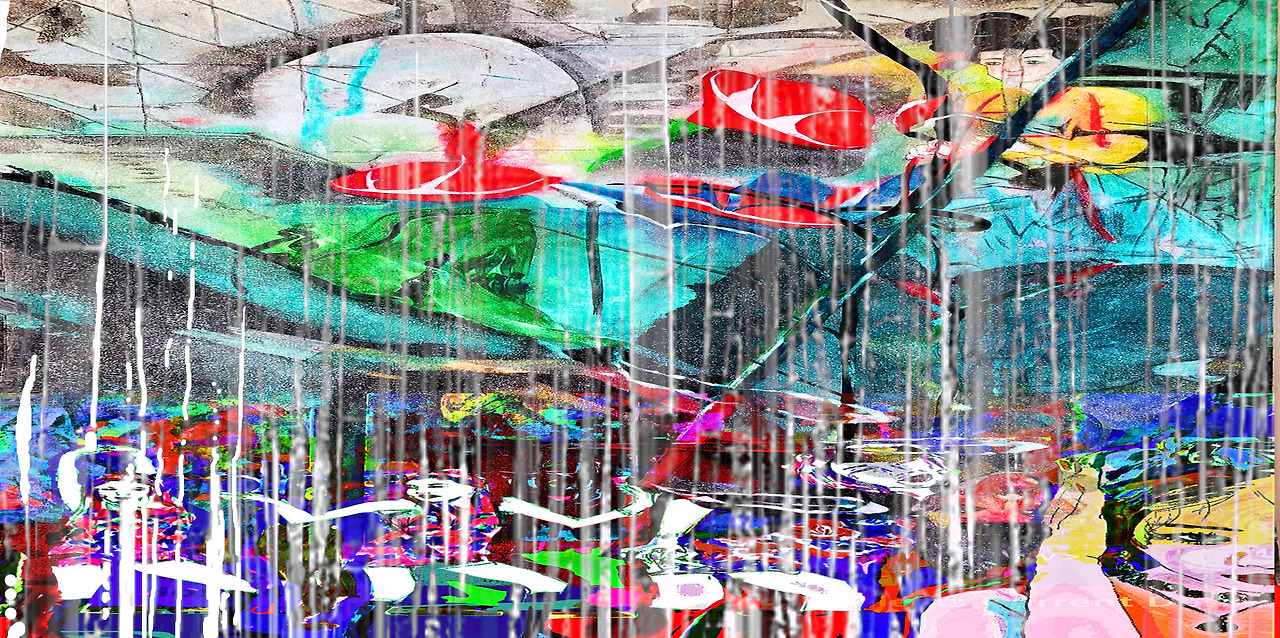
Contemporary Art Work: Abstract Painting with Treacherous Conceptual Art: Louis Chul-joo Choi, Bamboo Forest 237-Chungha, shows outstanding performance: By repeatedly applying the concept of imaginary world and desire and Choi Chul-joo's desire formula <D(I...I')d=I(D...D'i)i> to the image of the work, it acquires aesthetic value and reveals its meaning by realizing formability in the shadow of reversible light.
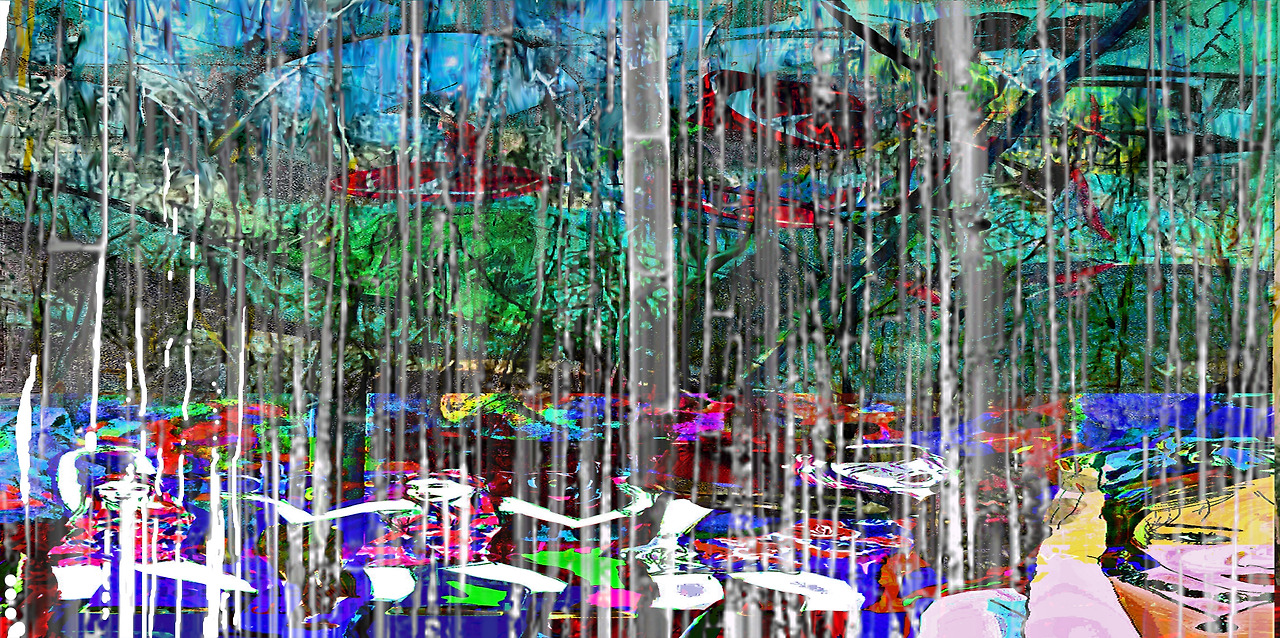
Contemporary Art Work: Abstract Painting with Treacherous Conceptual Art: Louis Chul-joo Choi, Bamboo Forest b237-Chungha, shows outstanding performance: By repeatedly applying the concept of imaginary world and desire and Choi Chul-joo's desire formula <D(I...I')d=I(D...D'i)i> to the image of the work, it acquires aesthetic value and reveals its meaning by realizing formability in the shadow of reversible light.
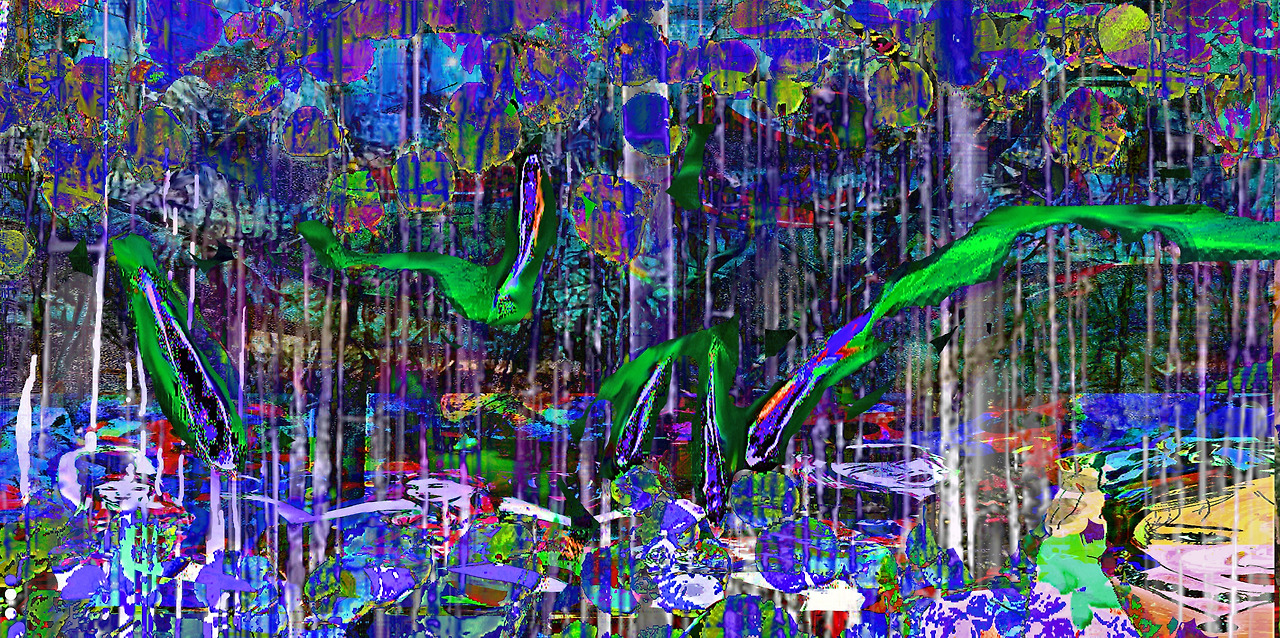
Contemporary Art Work: Abstract Painting with Treacherous Conceptual Art: Louis Choi Chul-joo, Bamboo Forest b237-Chungha, shows outstanding performance-pond: By repeatedly applying the concept of imaginary world and desire and Choi Chul-joo's desire formula <D(I...I')d=I(D...D'i)i> to the image of the work, it acquires aesthetic value and reveals its meaning by realizing formability in the shadow of reversible light.
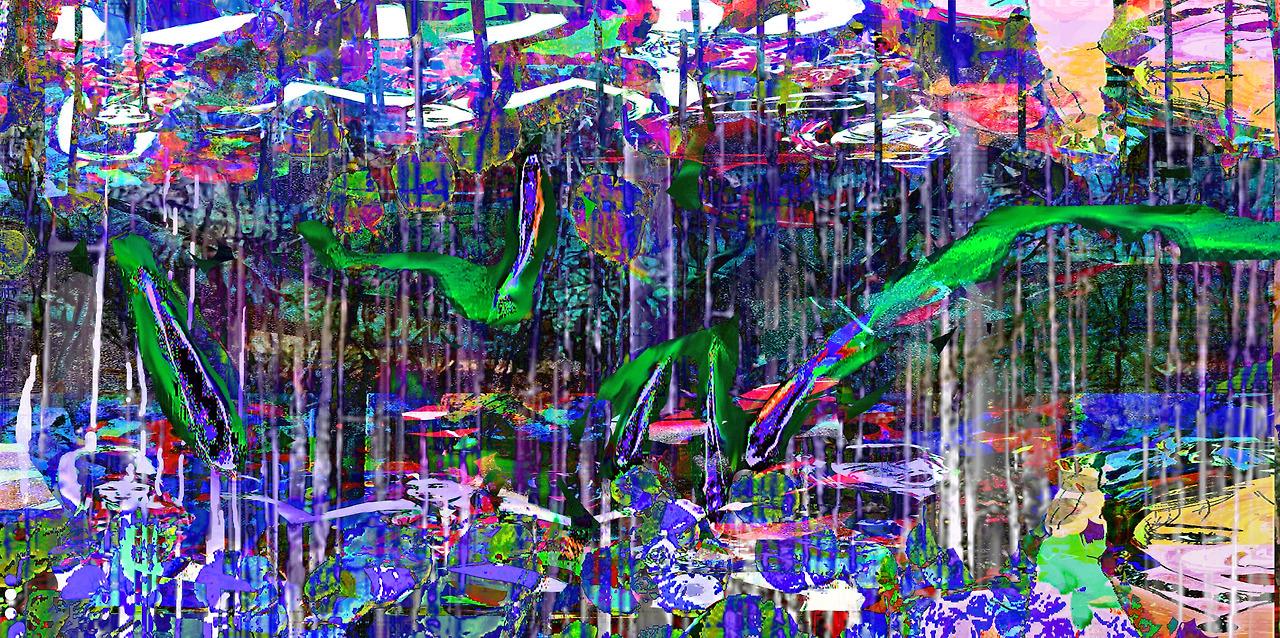
Desire Concept Realistic Abstract Work: Louis Choi chuljoo, In front of the bamboo forest Bamboo Forest Bamboo Forest b237-Chungha, shows outstanding performance-pond-mirror: By repeatedly applying the concept of imaginary world and desire and Choi Chul-joo's desire formula <D(I...I')d=I(D...D'i)i> to the image of the work, it acquires aesthetic value and reveals its meaning by realizing formability in the shadow of reversible light. / The meaning of the shape, which is covered by the actual changed instantaneous movement of the shape, leads to verbal abstraction. In other words, the shape in which the other's desire is realistically revealed in a momentary event is a linguistic abstraction with the same meaning. Conceptual art with morning glory and bamboo as a cultural background is linguistic abstraction. Abstraction creates a conceptual structure reflected in a pond based on the shape of subsequent reality fostered by language and hides the desires of others in instantaneous events.And Choi Chul-joo's concept of desire visualizes the concept of desire as a linguistic expression for "morning glory" reflected in the "pond" structure of symbolic reality, reducing the abstract concept of desire to a real image in the category of ideal desire expression in contemporary art.
In addition, as a process of designing the concept of desire, the object of desire is symbolized as a conceptual subject, forming a reality expressed through desire revealed in the oppressed unconscious through design and revealing abstraction as existence

Louis Chul-joo Choi, morning glory p132-3-Chungha, shows outstanding performance, a hand-painted picture on a computer
Desire Concept Realistic Abstract Work: Louis Choi chuljoo, morning glory p132-3-Chungha, shows outstanding performance: By repeatedly applying the concept of imaginary world and desire and Choi Chul-joo's desire formula <D(I...I')d=I(D...D'i)i> to the image of the work, it acquires aesthetic value and reveals its meaning by realizing formability in the shadow of reversible light. / The meaning of the shape, which is covered by the actual changed instantaneous movement of the shape, results in linguistic abstraction. In other words, the realistic shape of the other person's desire in a momentary event is a linguistic abstraction of the same meaning. Conceptual art with morning glory and bamboo as cultural background is linguistic abstraction. The abstract creates a conceptual structure based on the shape of subsequent reality fostered by language and hides the desire of others in a momentary event.
The visualization of the concept of desire: Visualizing the concept of desire is a cartoon depicting events and performances manually, expressing the background of the cartoon as a landscape of desire with "morning glory" and "Bamboo Forest," and the cartoon image reconstructs desire into an abstract and realistic picture.
Desire Design Methodology in Abstract Art Theory on Painting Design, Contemporary Artist Choi Chul-joo's Desire Concept Abstract Design Methodology: <morning glory p132-3-Chungha, shows outstanding performance> As an Abstract Korean painting of Modern Art, Desire Formula <D(I...I')d=I(D...D'i)i> is applied to overlap the painting <Louis Chul-joo Choi, morning glory 2025-1-Pond Rendering Reflects Current Desire, 113X164cm, acrylic and composite materials on cloth, 2025> created by reversible light. In addition, by re-applying the desire formula by linking verbal metaphor images, a phenomenal conceptual place is set in another place in one space as a shade of reversible light and abstracted.
This translates to the first non-realistic abstraction poster at Louis Choi Chul-joo's 2022 New York Exhibition to actualize the Desire Object. The image <morning glory p132-3-Chungha, shows outstanding performance> becomes a non-real abstraction of reality.
By repeatedly applying the concept of imaginary world and desire and Choi Chul-joo's desire formula <D(I...I')d=I(D...D'i)i> to the image of the work, it acquires aesthetic value and reveals its meaning by realizing formability in the shadow of reversible light. / The meaning of the shape, which is covered by the actual changed instantaneous movement of the shape, results in linguistic abstraction. In other words, the realistic shape of the other person's desire in a momentary event is a linguistic abstraction of the same meaning. Conceptual art with morning glory and bamboo as cultural background is linguistic abstraction. The abstract creates a conceptual structure based on the shape of subsequent reality fostered by language and hides the desire of others in a momentary event.
By repeatedly sketching design and applying Choi Chuljoo's desire formula "D(I...I')d=I(D...D'i)i" to the conceptual image of desire, it instantly acquires aesthetic value and reveals the meaning of abstract desire by realizing realistic formability in the shadow of reversible light at that moment. / The abstract meaning of the shape in which the actual changed instantaneous desire shape is hidden by the reversible movement of light results in linguistic abstraction. In other words, it is verbal abstraction with the same meaning as a realistic form of the other person's desire in a momentary event or performance scene. Choi Chul-joo's conceptual art with morning glory and bamboo as the background of cultural abstraction is the linguistic abstraction of images. The abstraction creates a conceptual structure based on the shape of reality after the meaning fostered by language and hides the abstract desire of others in momentary events and performance scenes.
Therefore, conceptual abstract painter Louis Choi Chul-joo's "Louis Choi chuljoo, morning glory p132-3-Chungha, shows outstanding performance" is a desire image of a real structure that is reconstructed into a reversible structure of light as an image of the concept of desire created from a transformed image meaning the reality of morning glory.a New Yorker's private collection
Therefore, conceptual abstract painter Louis Choi Chul-joo's "Bamboo Forest b237-Chungha, shows outstanding performance-pond-mirror" is a desire image of a real structure that is reconstructed into a reversible structure of light as an image of the concept of desire created from a transformed image meaning the reality of morning glory. And Choi Chul-joo's concept of desire visualizes the concept of desire as a linguistic expression for "morning glory" reflected in the "pond" structure of symbolic reality, reducing the abstract concept of desire to a real image in the category of ideal desire expression in contemporary art.
In addition, as a process of designing the concept of desire, the object of desire is symbolized as a conceptual subject, forming a reality expressed through desire revealed in the oppressed unconscious through design and revealing abstraction as existence.
Object rendering of the concept of desire is 1. a pop art image that renders unconscious desire as an existential reality by dividing the same concept of desire as the event image into unconscious and real images as an object. Therefore, the subject who speaks linguistic meaning actually represents abstraction, the truth value of the concept of desire, which is an expressive aesthetic structure that specifies the viewing effect of colloquial language and event video broadcasting as an act of speech enunciation that depends on the news. 2. As the truth value of the concept of desire in visual images is an open system, and numerous visual images are transmitted to others through a pluralistic visual system. Abstract images, which are the true values of the concept of desire, attract attention because they have universality as real images expressed by the desires of others. In other words, the object exposed to the abstract desires of others functions as a desire to exchange the same aesthetic image as the concept of desire of others through the diachronic function of pop art applied as a work of art. 3. The truth value of the concept of desire in a linguistic sense in which the abstract image of the concept of desire and reality are the same, represents the structure of desire, and the reality of the abstract concept of desire is a real image, which is the causal structure of desire, and creates a structure of desire by forming a semantic relationship with contradictory desire. Like Kant, this is a dual structure up to modern art, and it encompasses mythical objects in the same structure as humans, and the antinomic desire structure as a single structure. 4. an object of the concept of desire rendered in abstraction: The object rendering of the concept of desire renders the object as an event image, which is the same rational object as the linguistic meaning of the desire structure through the gaze of the rational subject, is recognized as a real image that the subject cannot see. Additionally, other objects of desire are continuously represented by real images that attempt to fill the deficiency of desire. The pond, which reflects present desire as an object to abstract desire, presents a desire structure as a reality, which is an object to abstract desire, but it returns the cause of desire as a real image to an object as an event image, free from the imperfect abstraction that lacks desire that is subjugated to social visibility that has been concealed and deviated from lack through real images. In other words, the structure of deficiency and divided desire is hidden through real images of abstract desires, and contradictory desires subordinate to deviated social visibility become the cause of desire and become the objects of real images. In addition, object rendering of other desires is continuously expressed as a real image trying to fill the deficiency of desire. The rendering of an object that reflects the present desire as an object of abstract desire presents the structure of desire as reality, which is the object of abstract desire, but it returns the cause of desire as a real image to an object as an event image, away from the imperfect abstract lacking desire. In other words, the structure of deficiency and divided desire is hidden through the real image of abstract desire, and contradictory desires subordinate to deviated social visibility become the cause of desire, resulting in abstraction as a real image.

Background image of an artist's artwork: Louis Choi Chul-joo, the bamboo forest 237, a hand-painted picture on a computer
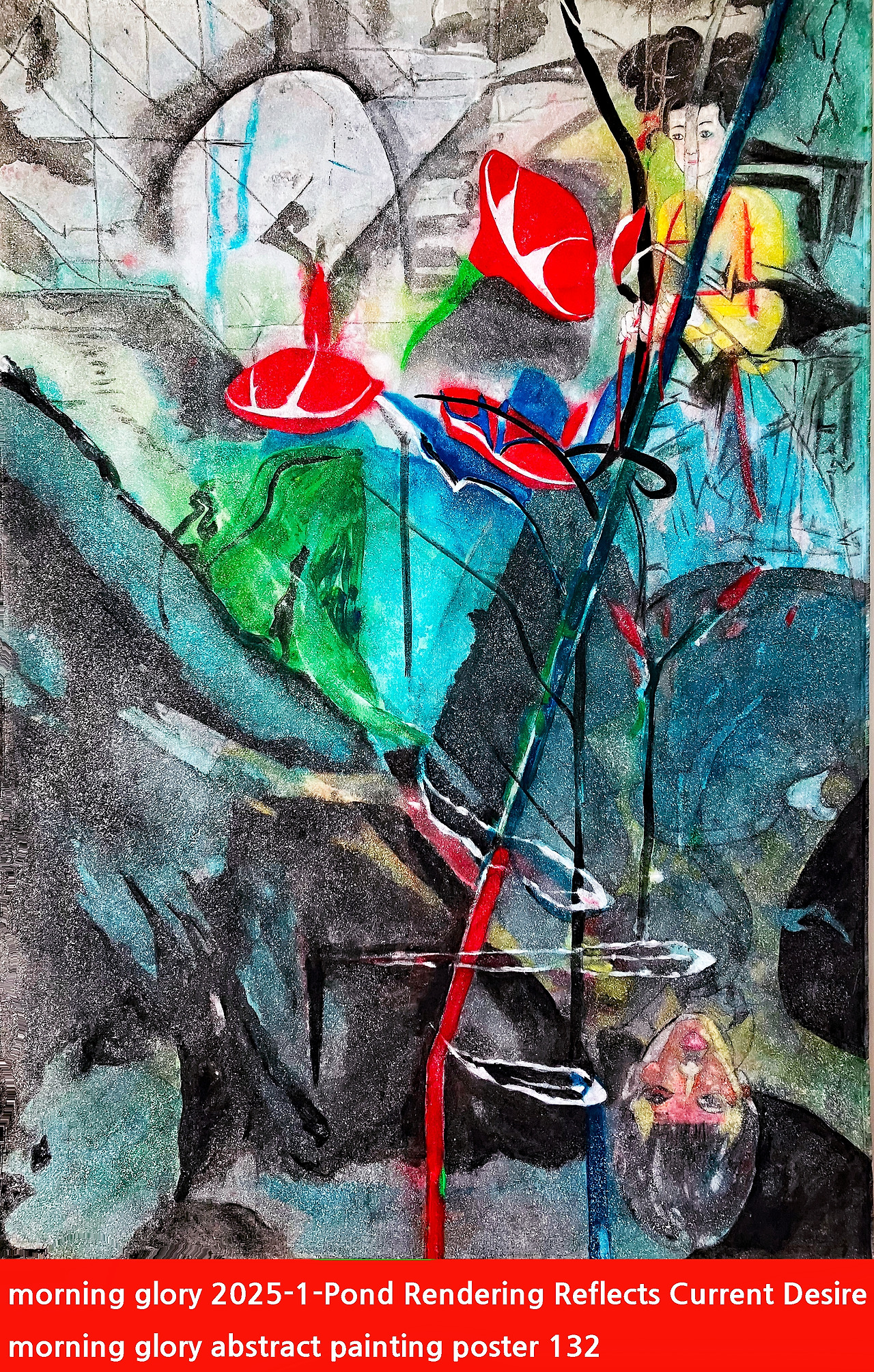
Background image of an artist's artwork: Louis Choi Chul-joo, morning glory p132, a hand-painted picture on a computer
Choi Chul-joo's concept of desire Abstract design concept is a new abstract art methodology that embodies modern abstract concepts transformed from Romanticism to Abstract as real images, starting from the modern art movement.
One conceptual art creates a dual place with the concept of the selector's desire rather than abstract, overtakes abstract conceptual art in the dual place, and repeatedly designs a reality image as a semantic entity with the abstractly deficient desire structure desired by the selector as the subject.
The conceptual aesthetics of figures that design the reality of desire are the result of designing a lack of empirical desire to abstract aesthetic experience into objective reality as a value of life, and formative value is obtained from real images by satisfying the lack of necessary objects.
Here, the object of desire is insufficient and follows the other's concept of desire to obtain semantic correlation through empirical consciousness movements.
Therefore, the actual image as a structure of desire has an aesthetic value that conforms to the conventional practice by omitting shadow images from the real world and placing them in the range of light due to the concept of desire, and settles in the structure of the real subject and the essence of reality. By inductively illuminating the concept in the reversible shadow of light, it clearly embodies the linguistic meaning of the image and the real phenomenon.
By inductively illuminating the concept in the reversible shadow of light as a real image of desire, the linguistic meaning and real phenomena of the image are clearly embodied like mathematics.
As a specific object and subject composed of the psychological vector of the concept of unconscious desire in the real image, the instruction vector in which desire is opposed to each other's gaze creates a lack of desire.
In this way, mathematics is an abstract science based on the concept of desire, which goes through abstract design as an axiom and results in reality as a concrete phenomenon rather than based on the external structure of the linguistic meaning.

Final image superimposed on the artist's work:: Louis Chul-joo Choi, the Missing pond, 112X249cm, acrylic and composite materials on cloth, 2024: The actual image has a perspective tone of the symbolism of the reality of the desire structure deposited in the pond. At the same time, as a figurative image that characterizes contemporary linguistic meaning, it creates a frame on the boundary of the pond for the desire of the other, creates an abstraction of the abstract desire structure as an image of an actual object, destroying the phenomenal symbolic system of conceptual abstraction with lines and colors, and forming an image suitable for the purpose desired by the subject as a reality.
In this way, the desire image constitutes a desire position as an inevitable object that the subject desires, acquires pictorial value as a real image of a linguistic concept, and uses linguistic abstract meaning to mark the inner concept of desire as an external image.
Linguistic abstraction is the structure of desire, and the background of desire, which establishes Lacan's imagination and reality reflected in the mirror as a visual structure, is Choi Chul-joo's "morning glory". In the design process of his concept of desire, the shadow that hides the reality in the shadow of reversible light is "Bamboo Forest". And the abstract language image that reflects the reality of the concept of unconscious desire as a linguistic structure is "The Missing Pond".
Therefore, Choi Chul-joo's concept of desire visualizes the concept of desire as a linguistic representation of the "disappeared pond" structure of symbolic reality, reducing the concept of abstract desire to a real image in the category of modern art's ideal Logos expression.
In addition, as a design process of the concept of desire, the object of desire is symbolized as a conceptual subject, forming the reality expressed through desire revealed in the suppressed unconscious through design and revealing abstraction as being.
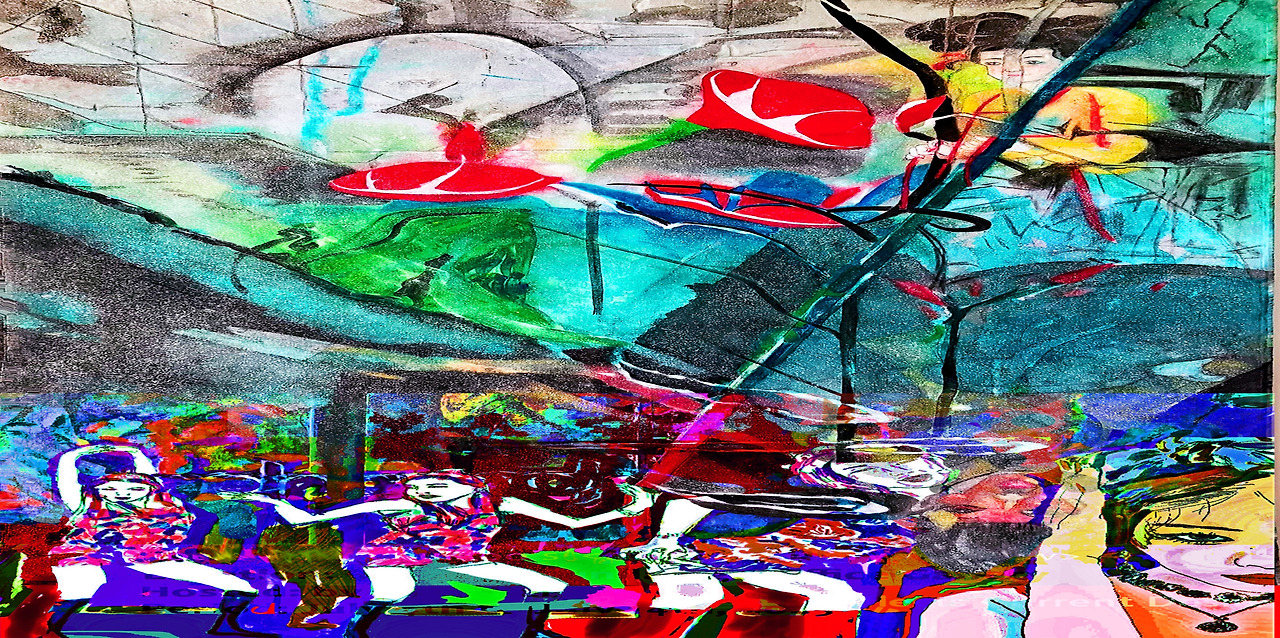
Louis Chul-joo Choi, Chungha, shows outstanding performance 9 ː l’interprétation du mot dans une nouvelle caricature] ■ newsmanwha K-Pop Song illustratoin [18] Chungha, shows outstanding performance. ACN ・ 2020. 7. 13. 23:25/ Reporter Choi Chul-joo’s Cartoon Review/ The visualization of the concept of desire: Visualizing the concept of desire is a cartoon depicting events and performances manually, expressing the background of the cartoon as a landscape of desire with "morning glory" and "Bamboo Forest," and the cartoon image reconstructs desire into an abstract and realistic picture. ■ Choi Chul-joo's Concept of Desire Formul: In the concept of Choi Chul-joo's desire, mathematical desire as an axiom of logic in the concept of desire results in reality as a concrete phenomenon rather than based on the external structure of the linguistic meaning through abstract design. Therefore, the rendering of the desire structure revealed by abstract encounter with reality at the intersection of desire outside the window applies the mathematical desire concept abstract design, or the image of the desire concept, to the Choi Chul-joo desire formula, and on March 1, 2022, morning glory appears as a flat real image as the subject of desire as a reversible shade of light in the Flushing Town Hall (New York) exhibition./ The image of desire, which applies Choi Chul-joo's desire formula D(I...I')d=I(D...D')i to 'morning glory', connects the concept of desire with the background of 'morning glory' as an image to create a landscape by floating morning glory in the sky. In addition, in <morning glory>, the desire formula "D(I...I')d=I(D...D')i" is substituted, the connection effect between the concept of desire and the "morning glory" as desire image shades the concept of desire in the reversible shadow structure by setting the object as the concept of desire image of women by the "morning glory". In other words, the image of desire (I) is the structure of desire (D) because desire (D) is repeated (I...I') in several images (D...D'), and the image of art behavior or desire image(I) appears as the concept of desire(i). ■ Choi Chul-joo's Desire The design process of abstract concepts: 1. The concept of desire is abstracted from the perspective of an image to the outside of reality, and the image of reality as an object of abstraction is designed as the correlation between reality and reality. This is the design process 1 of Choi Chul-joo's concept of abstraction of desire. This does not presuppose a causal relationship with the real world, but rather results in an abstract concept of desire as a correlation with reality to escape the misunderstanding that transfers from an abstract concept to a real structure. 2. The scope of showing the concept of desire is created and located by omitting the actual size of the abstract concept as a shade of the concept of desire originating from the actual image. In addition, Choi Chul-joo's conceptual process 2 follows the process of decorating an object with a color of universal reality suitable for custom in order to have aesthetic value suitable for its position as a single image. This creates an abstraction that contrasts with the past and desire, in which the aesthetic structure hidden by realistic colors is divided by clouds and obscured by shaded light, obscuring the abstract concept in the actual image. 3. The subject who painted abstraction realizes the reality that symbolizes the concept of desire, and the unconscious realizes abstract desire as a conscious phenomenon of image. Desire is an abstract image realized as a conscious phenomenon of an image, and the unconscious structure is process 3 of designing an abstract art concept of desire that repeatedly designs desire that combines line and color in thoughts but is not conscious of unconscious behavior. 4. The unconsciously abstracted concept of desire is a piece of reality in which the object of reality is not seen as a reversible shade of light, concealing reality as a shadow and showing another real image as a video. This is the process 4 of designing an abstract concept of desire formed by combining the space of desire into a reversible light structure through the conscious movement of planar monochromatic painting carved into reality. ■ The Design Results of Choi Chul-joo's Desire Abstract Concept: Choi Chul-joo Desire Abstract Concept Design's Linguistic Meaning Results: Although the object that is obsessed with the desire for others is passive, it is possible to actively practice one's desires through the sympathizer as the subject of desire, and the sympathizer who sympathizes with the desires of others as the subject can practice with the same desire. As a subject, a person who sympathizes with or accepts the desires of others becomes the same desire and becomes another subject of execution. Here, the sympathizer who sympathizes with the subject of the other's desire tries to generalize it as another object of desire that acts like a victor of war. However, when desire as an act overshadowed by reversible light is not generalized as a public act, the subject of inappropriate desire and the sympathizer antagonize the subject who practiced it according to the other's general desire. ■ Object rendering of the concept of desire is 1. a pop art image that renders unconscious desire as an existential reality by dividing the same concept of desire as the event image into unconscious and real images as an object. Therefore, the subject who speaks linguistic meaning actually represents abstraction, the truth value of the concept of desire, which is an expressive aesthetic structure that specifies the viewing effect of colloquial language and event video broadcasting as an act of speech enunciation that depends on the news. 2. As the truth value of the concept of desire in visual images is an open system, and numerous visual images are transmitted to others through a pluralistic visual system. Abstract images, which are the true values of the concept of desire, attract attention because they have universality as real images expressed by the desires of others. In other words, the object exposed to the abstract desires of others functions as a desire to exchange the same aesthetic image as the concept of desire of others through the diachronic function of pop art applied as a work of art. 3. The truth value of the concept of desire in a linguistic sense in which the abstract image of the concept of desire and reality are the same, represents the structure of desire, and the reality of the abstract concept of desire is a real image, which is the causal structure of desire, and creates a structure of desire by forming a semantic relationship with contradictory desire. Like Kant, this is a dual structure up to modern art, and it encompasses mythical objects in the same structure as humans, and the antinomic desire structure as a single structure. 4. an object of the concept of desire rendered in abstraction: The object rendering of the concept of desire renders the object as an event image, which is the same rational object as the linguistic meaning of the desire structure through the gaze of the rational subject, is recognized as a real image that the subject cannot see. Additionally, other objects of desire are continuously represented by real images that attempt to fill the deficiency of desire. The pond, which reflects present desire as an object to abstract desire, presents a desire structure as a reality, which is an object to abstract desire, but it returns the cause of desire as a real image to an object as an event image, free from the imperfect abstraction that lacks desire that is subjugated to social visibility that has been concealed and deviated from lack through real images. In other words, the structure of deficiency and divided desire is hidden through real images of abstract desires, and contradictory desires subordinate to deviated social visibility become the cause of desire and become the objects of real images. In addition, object rendering of other desires is continuously expressed as a real image trying to fill the deficiency of desire. The rendering of an object that reflects the present desire as an object of abstract desire presents the structure of desire as reality, which is the object of abstract desire, but it returns the cause of desire as a real image to an object as an event image, away from the imperfect abstract lacking desire. In other words, the structure of deficiency and divided desire is hidden through the real image of abstract desire, and contradictory desires subordinate to deviated social visibility become the cause of desire, resulting in abstraction as a real image. ■ the abstract design process of conceptual abstract realism: 1. Conceptual Abstract Realism The current object is illuminated with reversible light so that the illuminated form can be repeatedly visually recognized according to the past temporality to actualize the subject's structure as a shaded structure of reversible light. And the design concept that constitutes conceptual abstract realism abstraction is determined as a philosophical result that can be expected with abstract causality so that the object is repeated as a design with the present gaze so that it appears to be a realistic image according to temporality. 2. The object of conceptual abstract realism is that the absence of desire as a non-verbal meaning is alienated from the symbolic world and loses its essence as the subject of desire. In the previous stage of linguistic meaning, according to grammar revealed as a symbolic image of existence, it was separated into a realist image recognized as an abstract desire concept and divided into a realist image, and the realist image as the subject of the desire structure is linguistically and diachronically meaningful. 3. The design of a realism image is an image that lacks the linguistic meaning of conceptual abstract realism, and the image in a linguistic sense is repeatedly designed as a post-effect of the desire structure being re-embodied, and a new conceptual abstract realism image is repeatedly designed. The direction and viewpoint of reversible light that make up the image along the chain of design are all stages of the perspective visual system according to temporality, and the line space of the visual structure, in which the image in the linguistic sense constitutes the desire structure, and the reversible light that constitutes the effect of the post-image produce a realism image at the intersection of the existential place with continuity. 4. Realistic abstraction creates a multi-loyal structural image of the linguistic meaning of unconscious structure composed of shadows at multiple points of reversible light separated from perspective, and girls are abstracted as divided subjects as talents that can be stared at momentarily while dismantled at a stereoscopic single point. 5. Conceptual Abstract Realism Abstractism Rendering is a conceptual abstract realism of wanting and linguistic desires that cannot be perceived at the level of expression consciousness, visualizing philosophical psychological structures and rendering them with linguistic meaning at the intersection of conceptual abstraction and unrealistic realism. As this becomes conceptual abstract realism abstraction, unconscious desires that represent the color tone and shape of desires invisible in the shade of reversible light become maps as conceptual abstract realism abstraction.
■ conceptual abstraction rendering process: 1. Integration of linguistic meaning and visual images: The abstract concept of desire is realized when the desire of others has an aesthetic meaning by facing the linguistic meaning in the image of an event as an object of a pictorial structure reflecting the present desire, and the image in the painting is closely connected to the linguistic meaning structure. As an object representing the concept of desire, the same concept of desire as the event image is divided into unconscious and real images, and an image modeling unconscious desire as an existential real image is sketched.
As for the sketch form of the current concept of desire, the concept of absolute desire is a symbolic metaphor shown in abstraction, and the concept of desire is abstracted as the desire of others, but it does not go beyond the scope of an imitative picture. Therefore, it is the modern conceptual abstract realism sketch that resulted in a real image through Choi Chul-joo's desire formula, which interpreted abstract concepts in a linguistic sense as the desire of others. This is a realism that interprets the concept of abstract desire as a real structure as a expressive image with a linguistic meaning in the real world, where pictorial event images are closely connected with linguistic semantic structures. Here, by applying existential semantics as an event and performance image, the object of the real structure is represented as a phenomenal image of the real world, and the abstract structure is identified with conceptual reality. 2. Visualization of Abstract Desire Concept: To accept the difference from the actual image in the concept of abstract desire as the meaning of the linguistic concept, and to embody the unconscious desire as an abstract image, the abstract image that constitutes the relationship structure with desire is painted and embodied in the actual structure created by the linguistic meaning of the conceptual reality of desire structure. This is an abstraction of Choi Chul-joo's conceptual abstract realism, which hides the formative reality of desire in pictures and abstracts event images based on real news, away from the social constraints (制約) acceptable in religious customs. Abstraction is a subjective concept that refers to linguistic meaning and expresses the viewing effect of colloquial enunciation and event video broadcasts in abstraction. This abstraction represents the true value of the concept of need and is an expressive aesthetic structure that embodies the elements that depend on the news.
The abstraction is represented as an abstraction which is a truth value of the concept of desire as an expressive aesthetic structure of one speech act that identifies the viewing effect of colloquial language and event video broadcasting as an enunciation. 3. The artistic experiment of reversible light and temporality: The experiment of conceptual abstract realism renders abstraction based on temporality in the linguistic sense that desire and reality are the same. Here, the structure of desire is abstracted by forming a semantic relationship between desire and reality according to temporality. In the abstraction, the abstract reality of desire is the causal structure of desire, that is, the antinomic equivalence represents the structure of desire by forming a semantic relationship with desire as a real image in which the reality of the abstract concept of desire is the causal structure of desire from an aphoria image. In abstraction composed of real images as the structure of desire, the morphological image of visible metaphor is transferred to abstract language meaning. Therefore, the real image as a result of exploring the existential realism according to temporality through the shadow of reversible artificial lighting is a metamorphic fixation as an abstract meaning in which the desire structure is obscured. In other words, in abstraction, the other's desire as an image of social events transforms into an additional form. As such, conceptual abstract realism rendering is raised by time and existence through the shadow of reversible lighting, repeatedly designing realistic images induced by social phenomena, creating a realism image with a desire formula, and the subject based on the event image repeatedly designing and rendering a realist image induced by social phenomena with a desire formula.